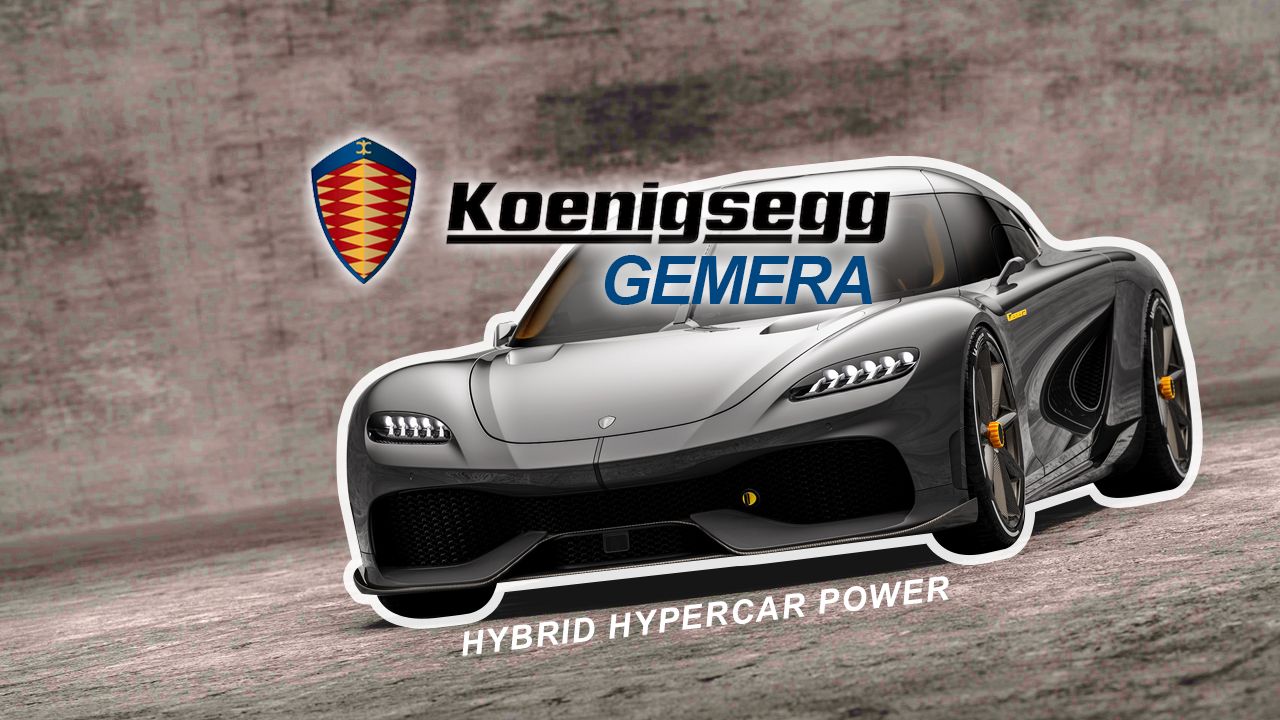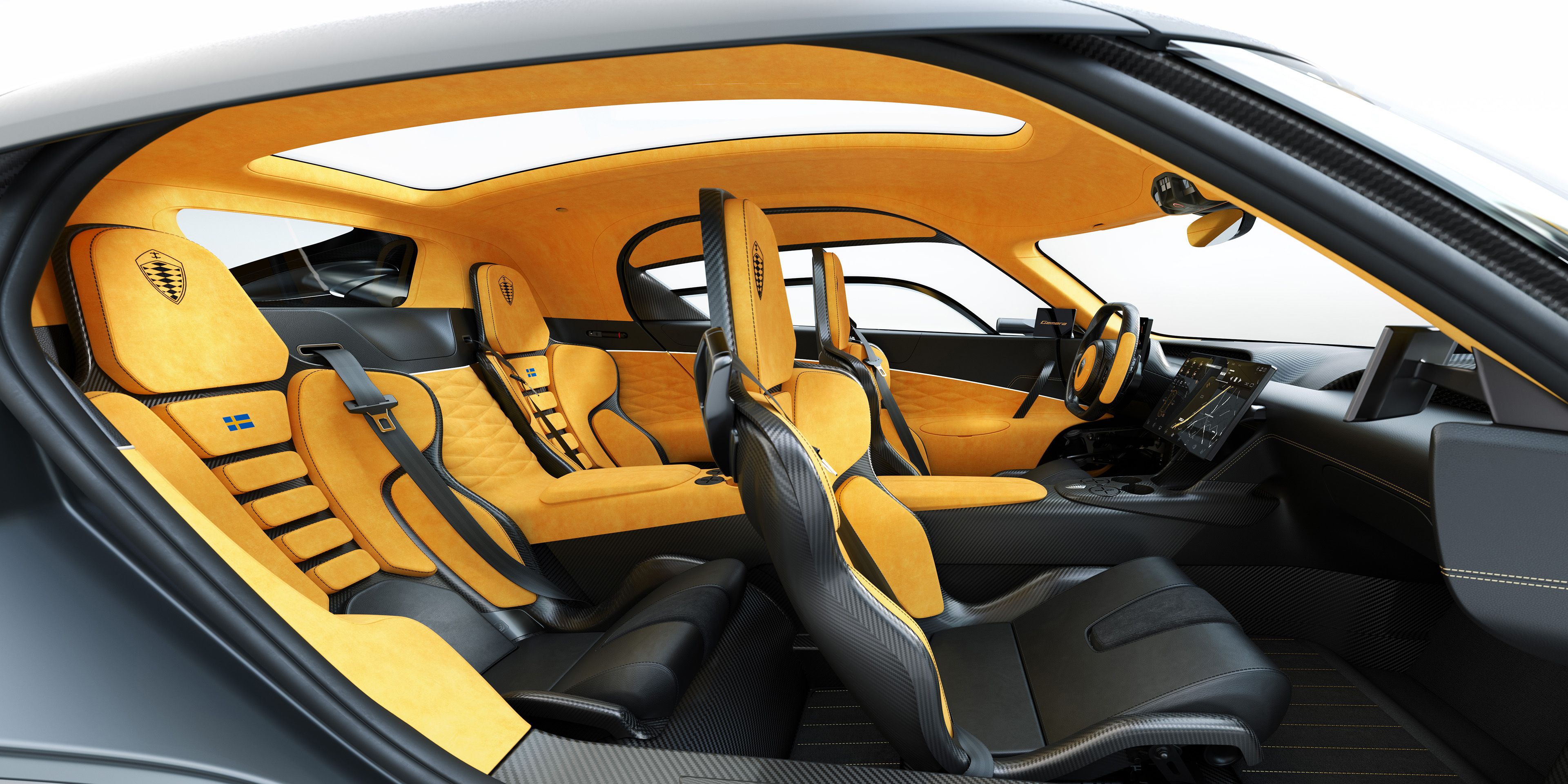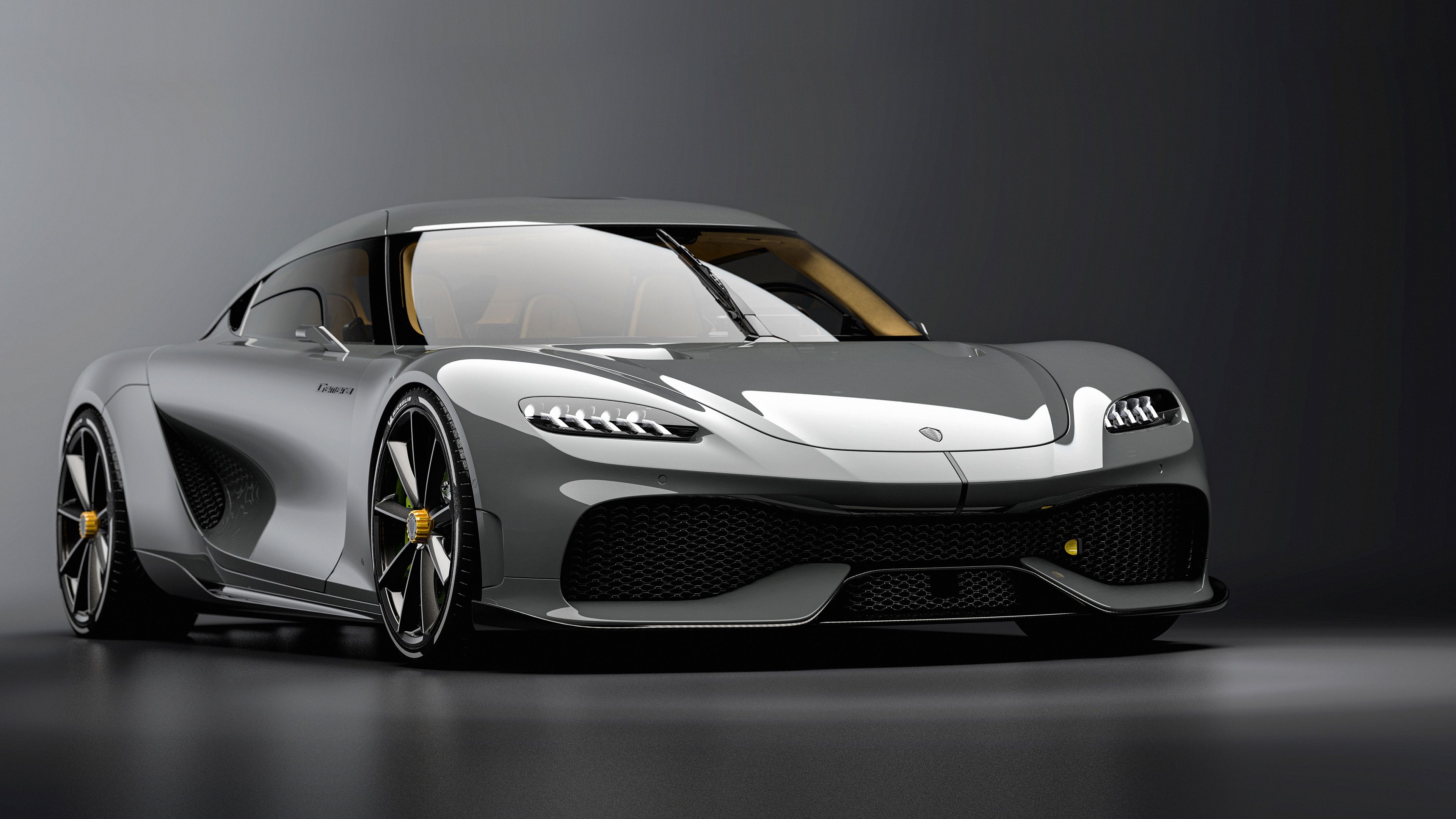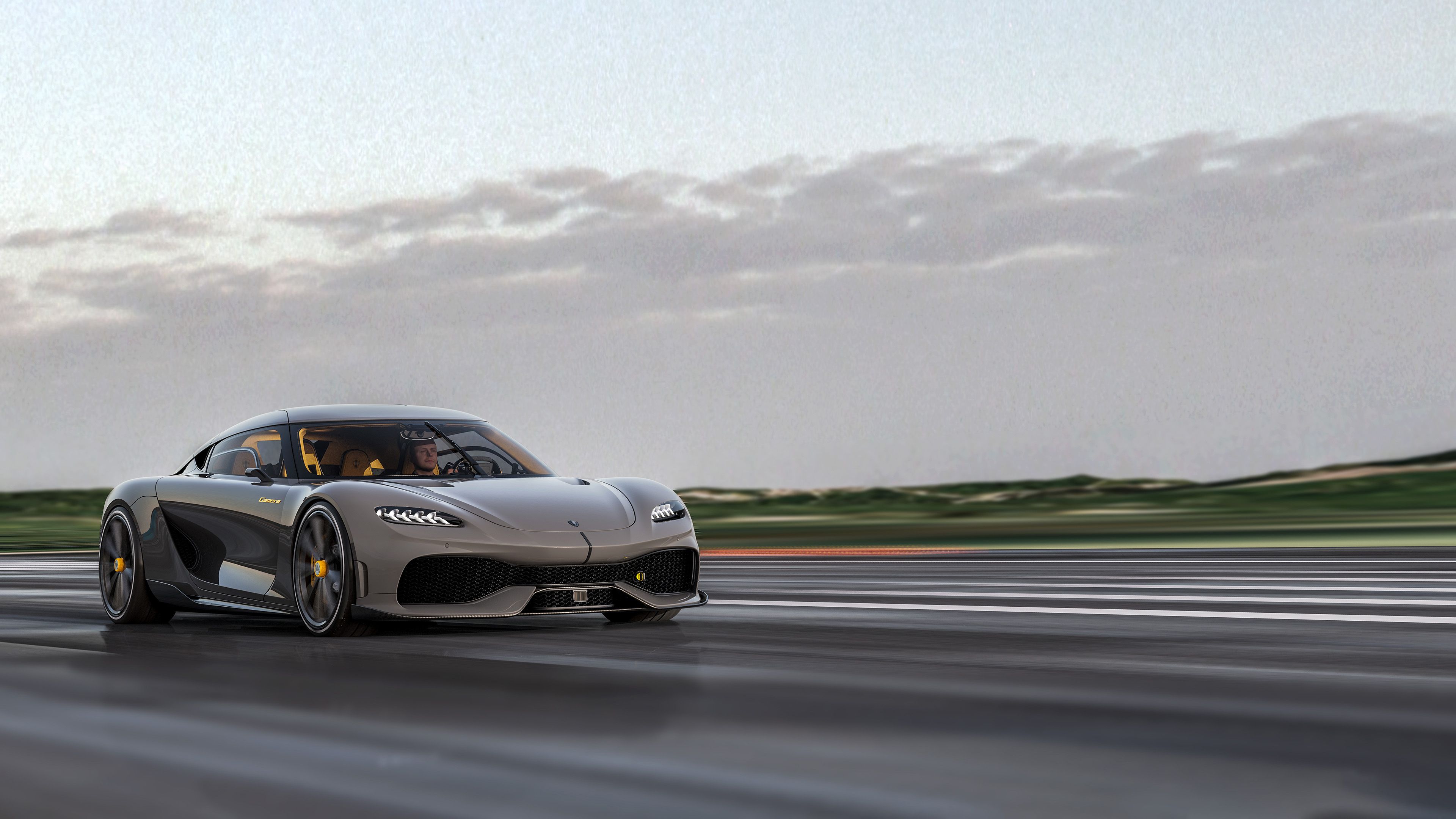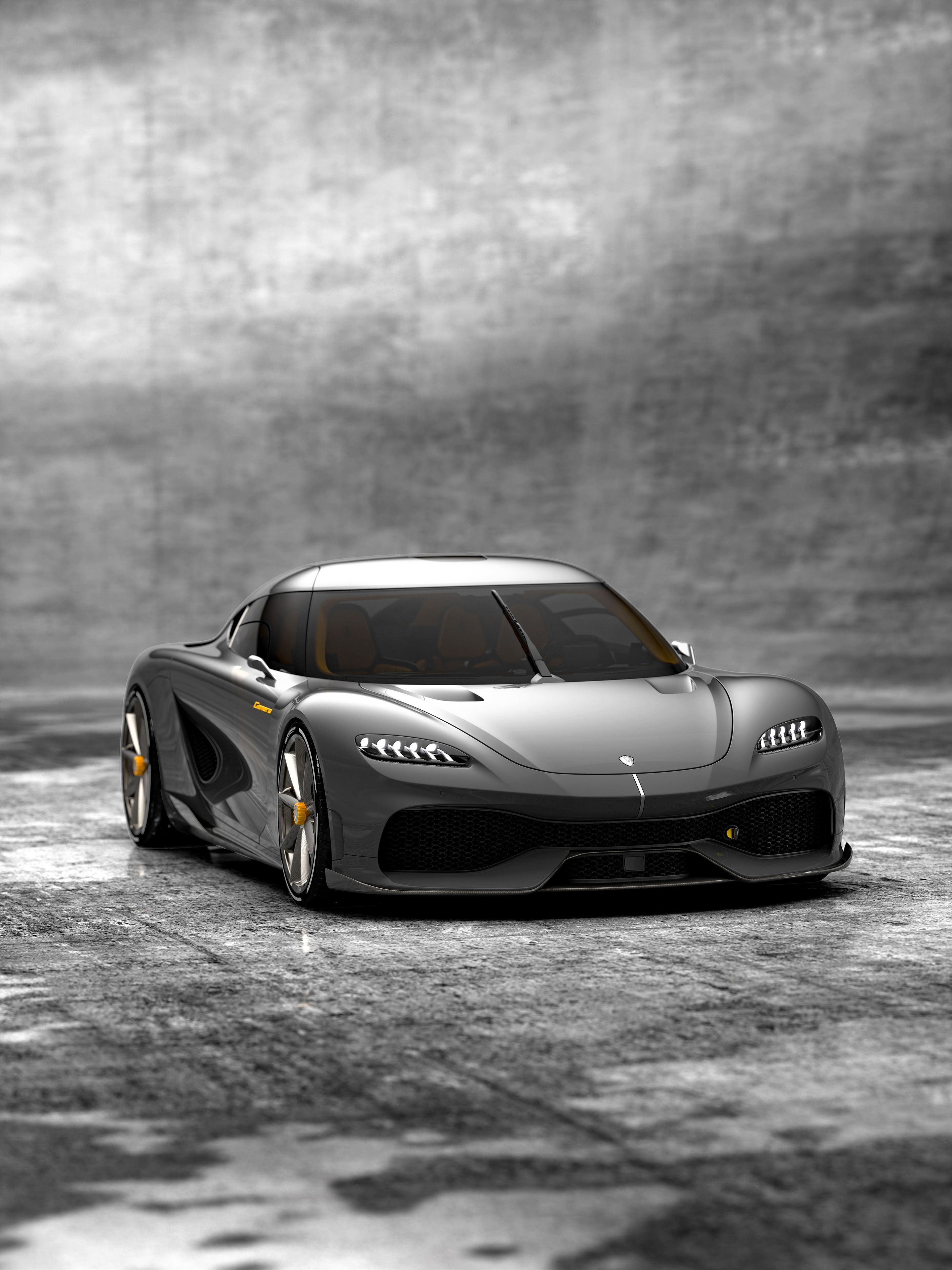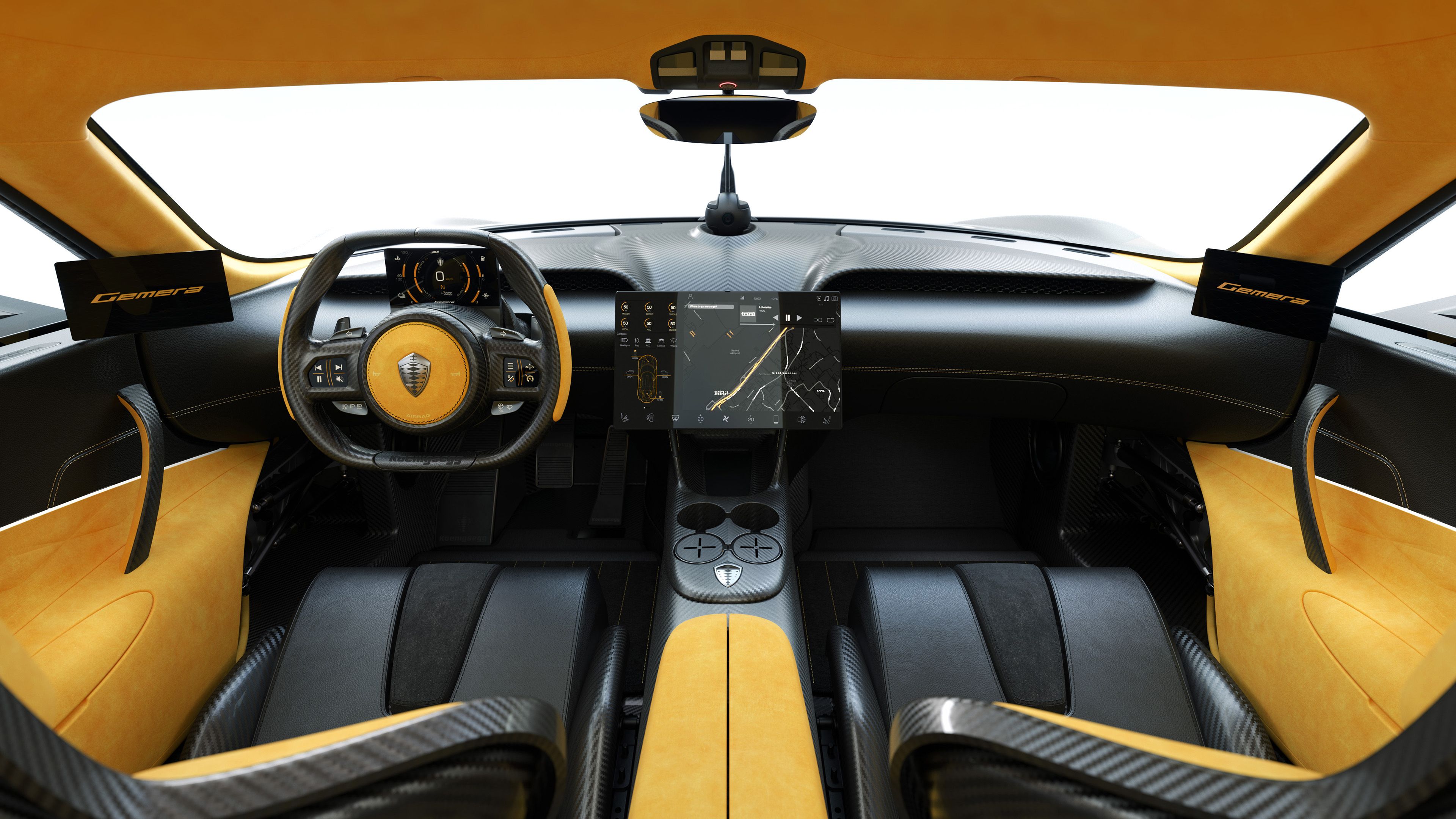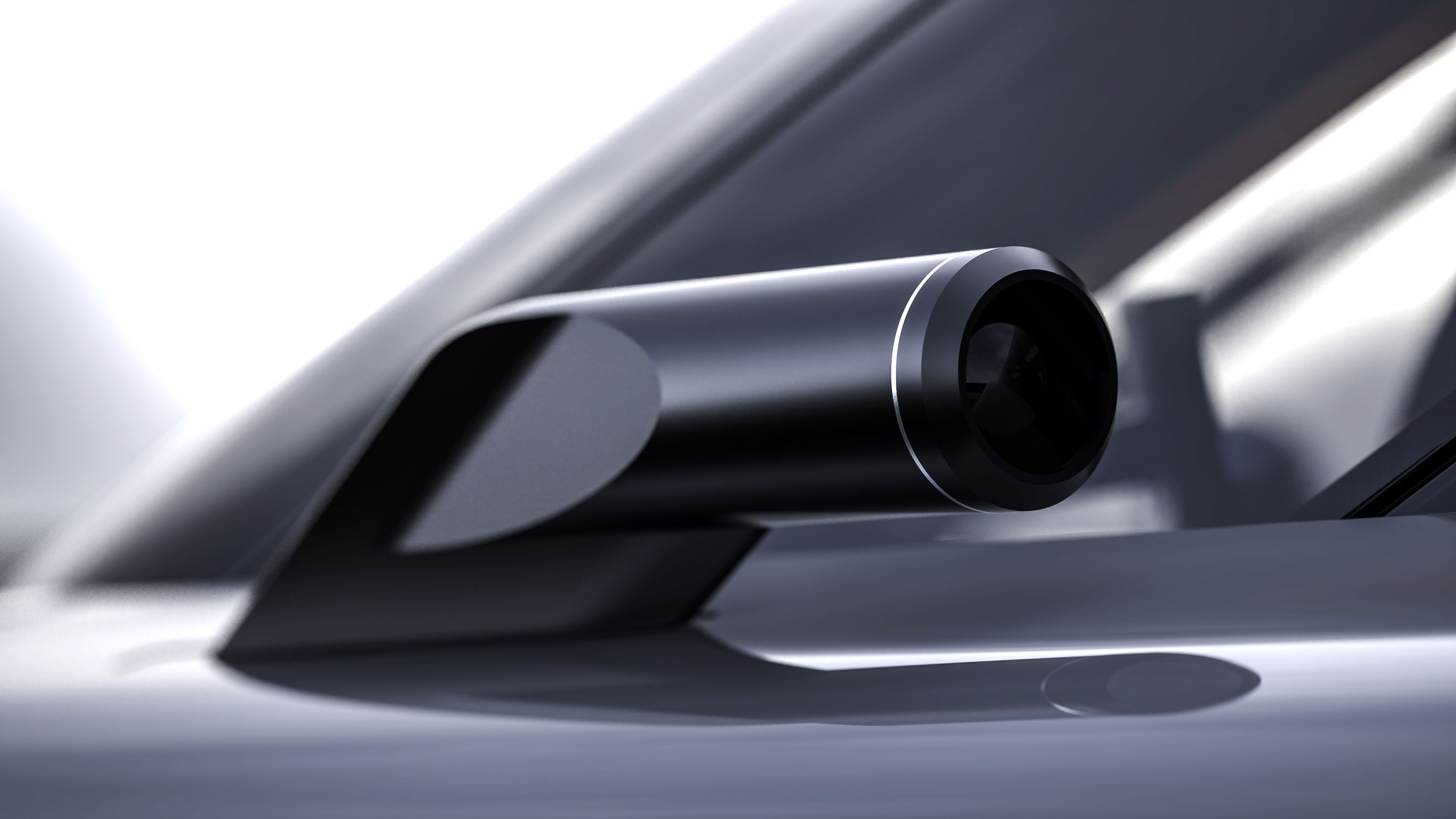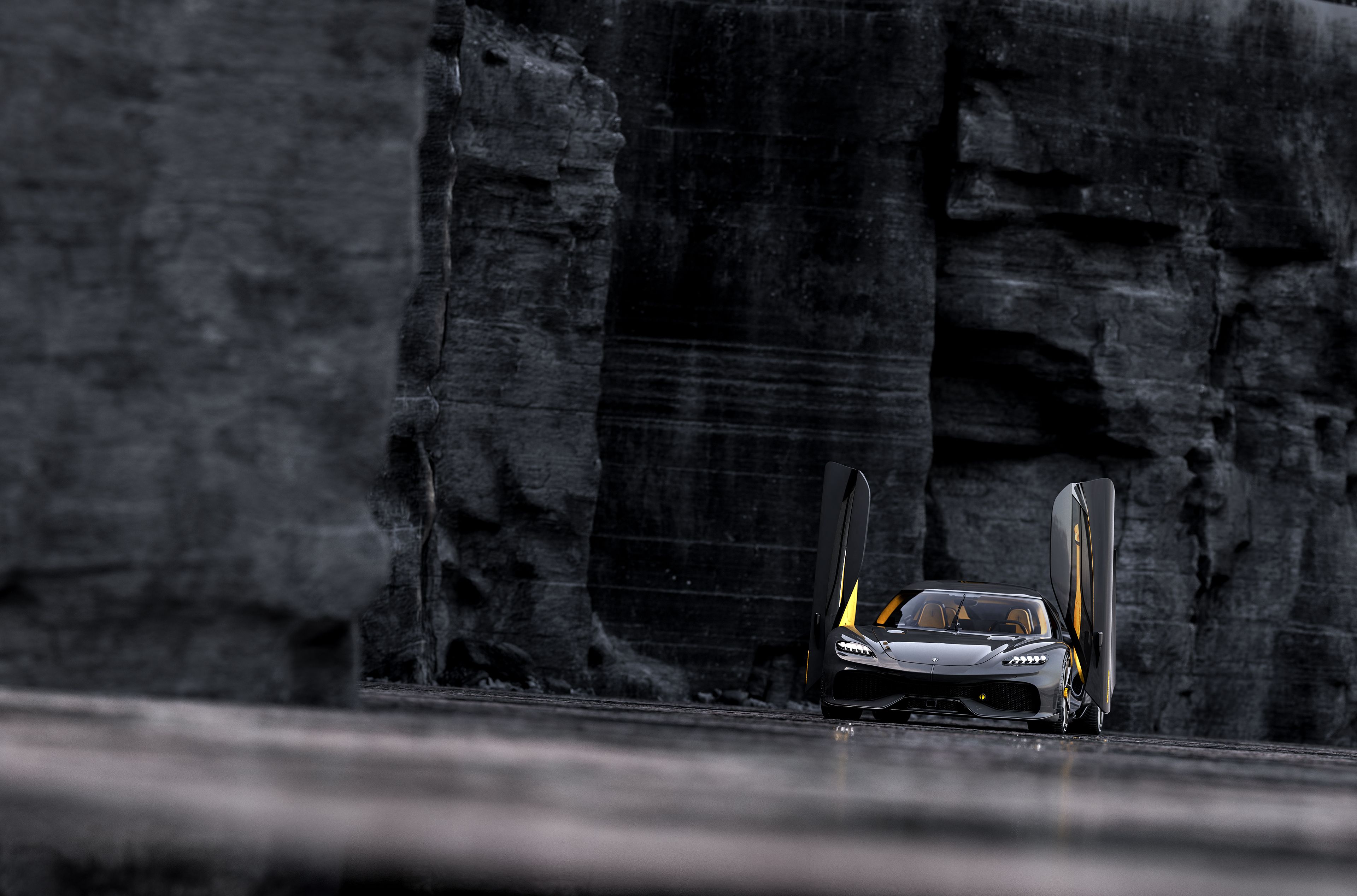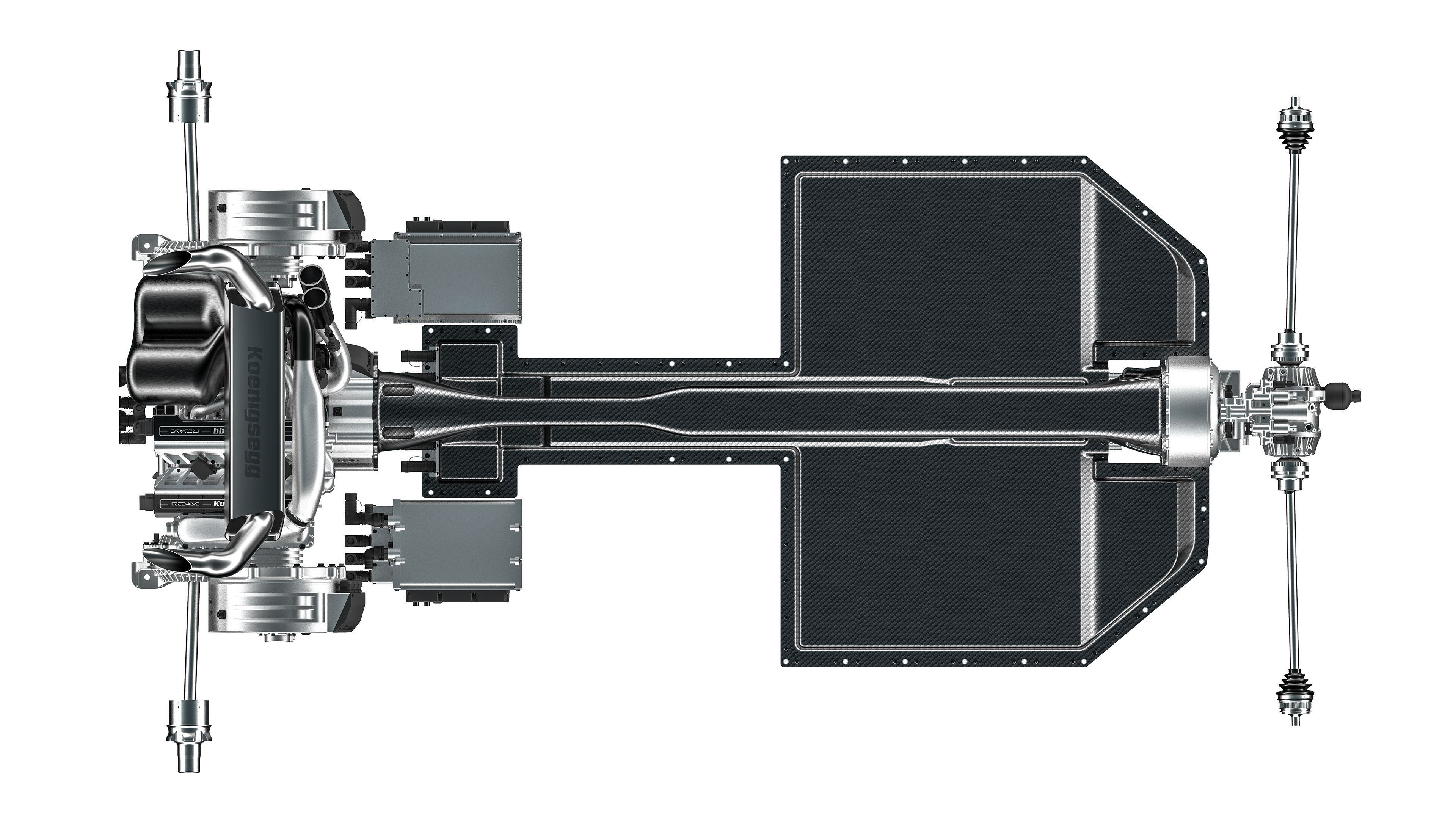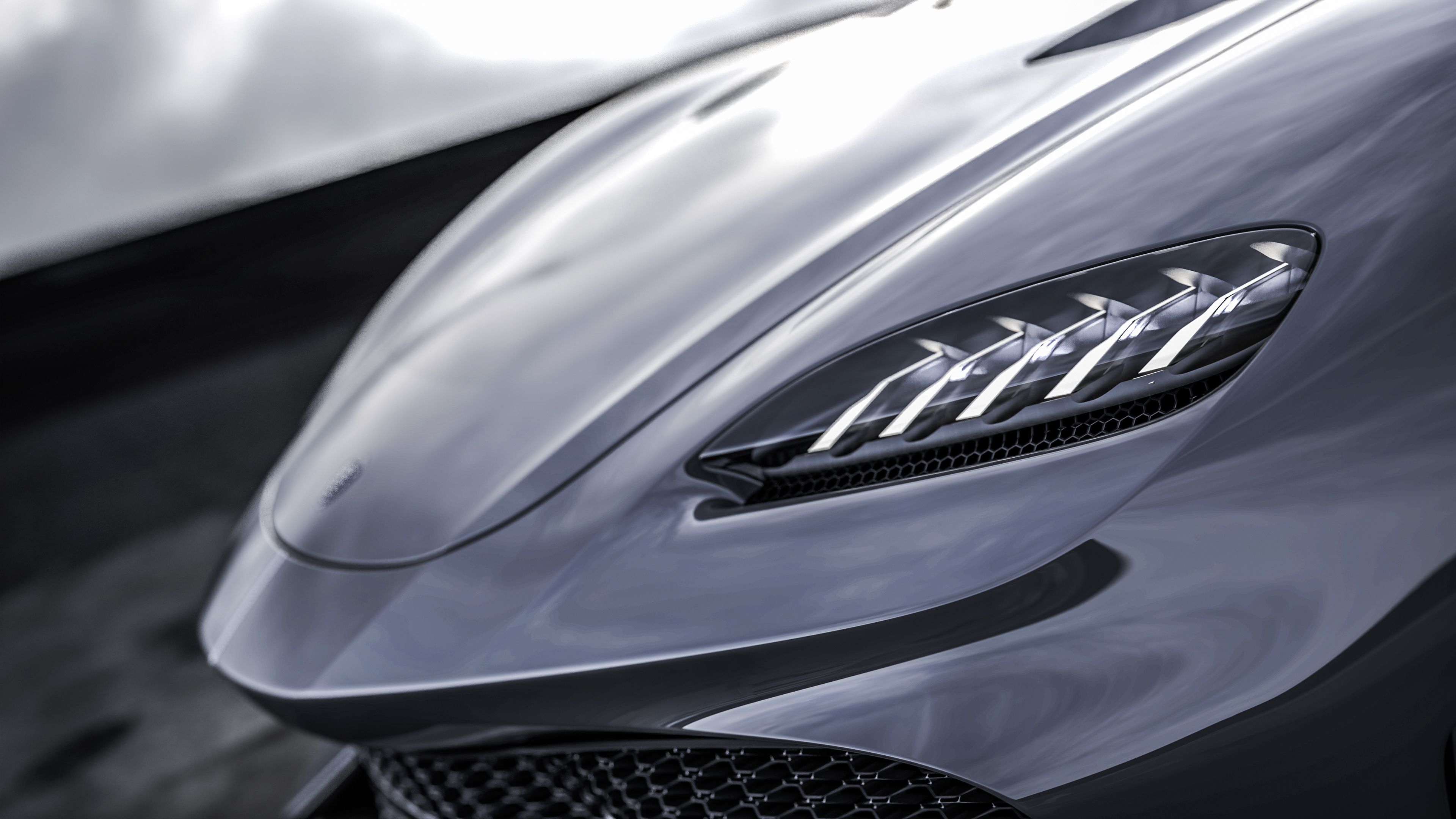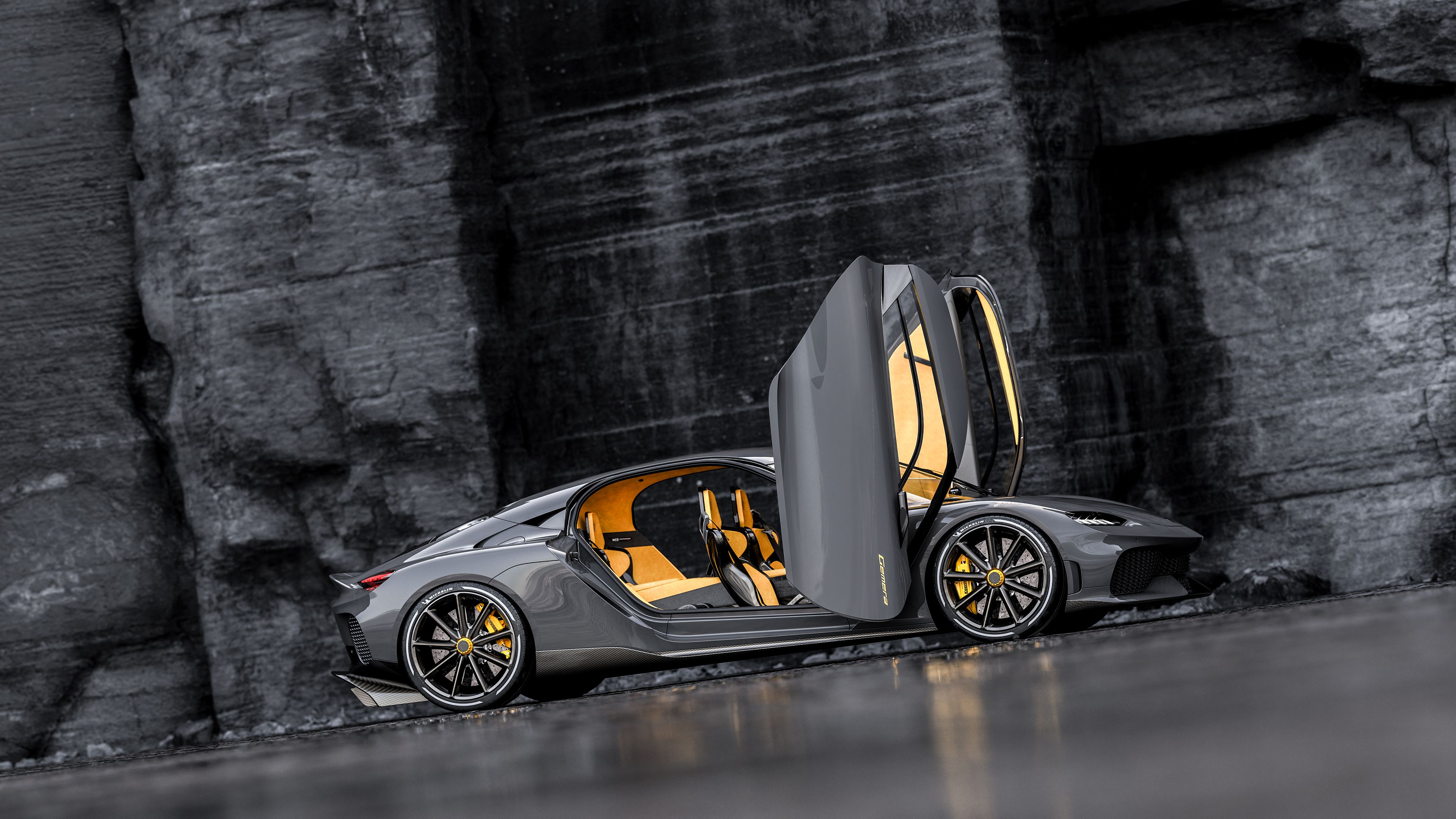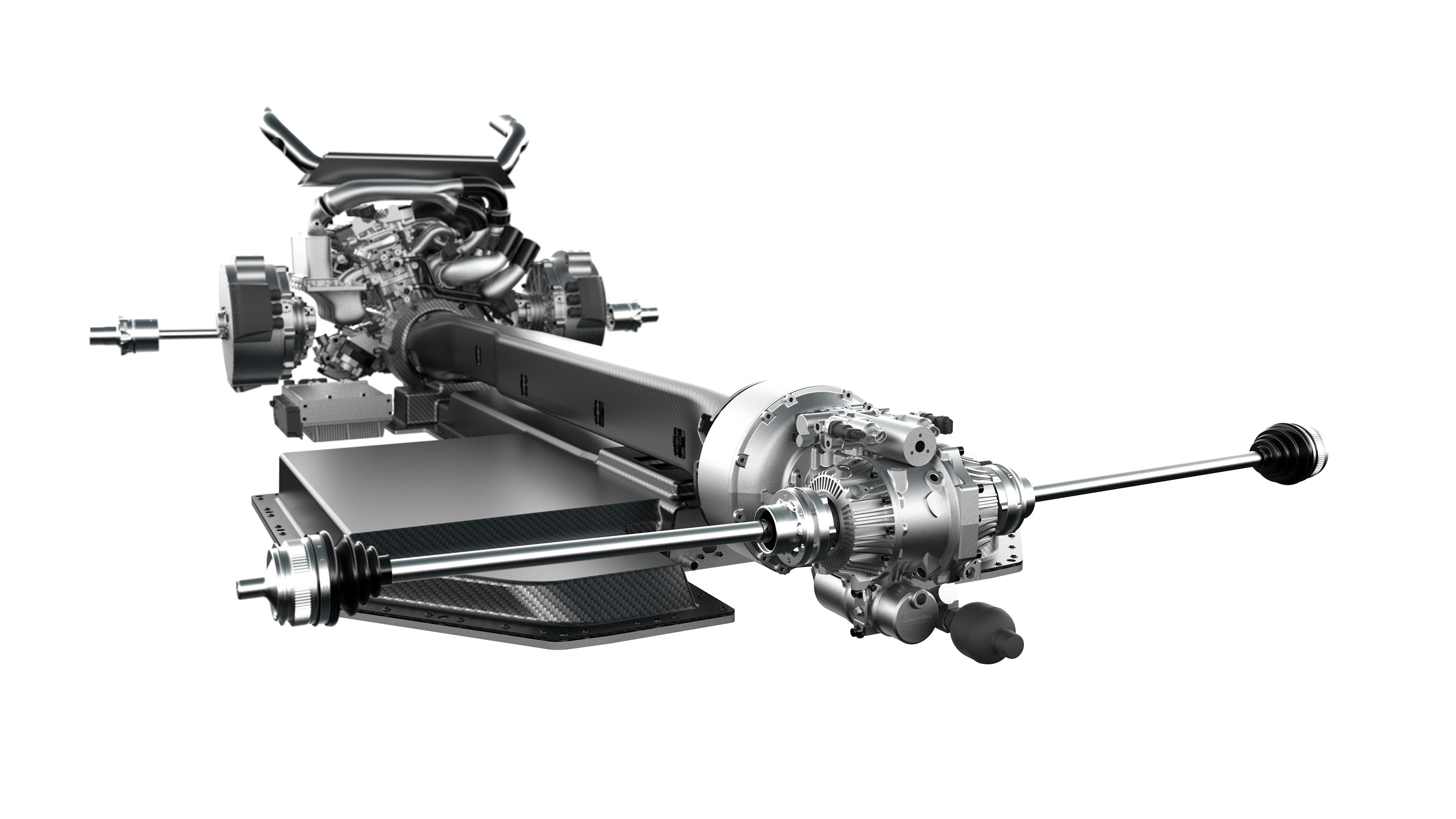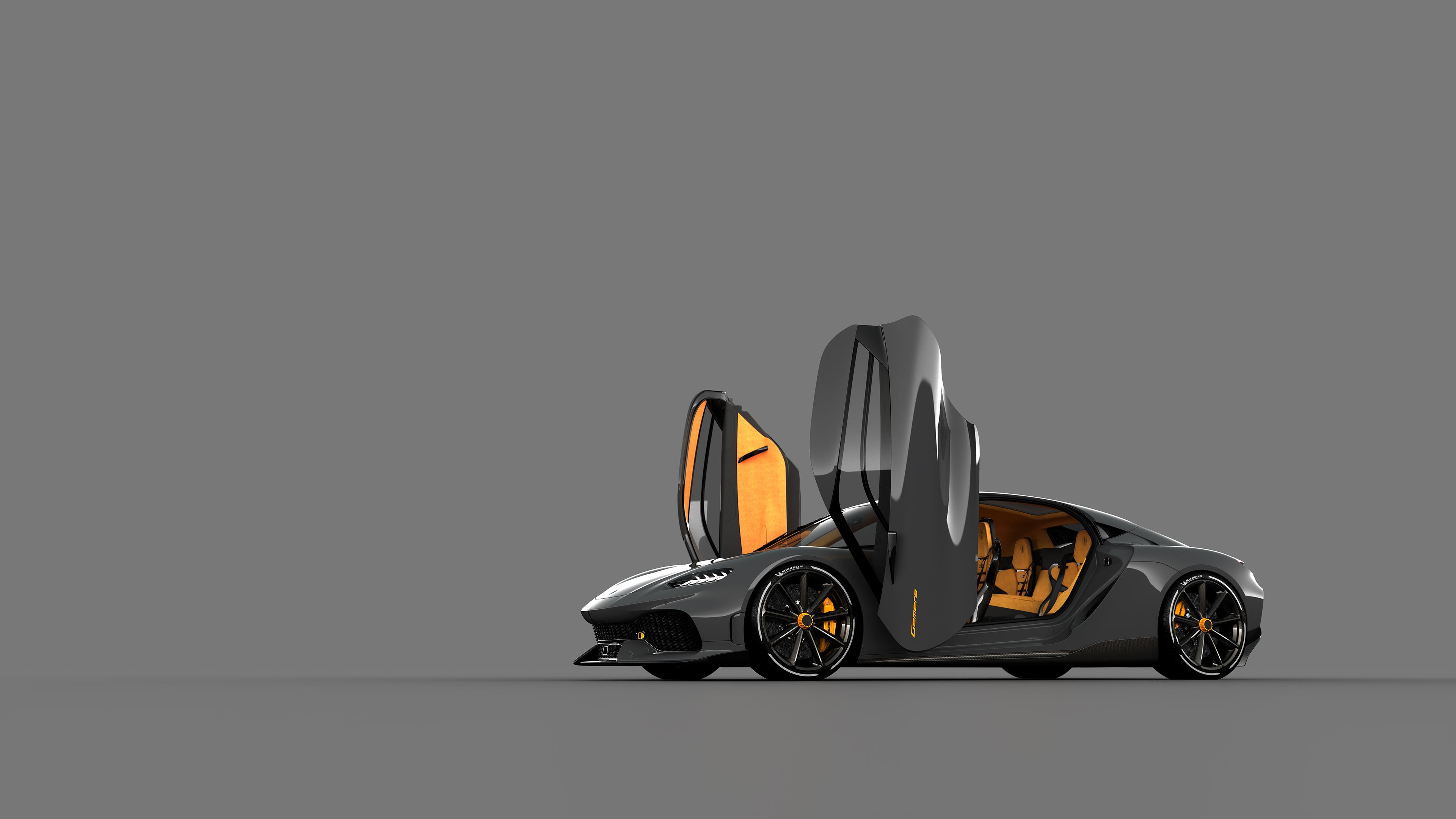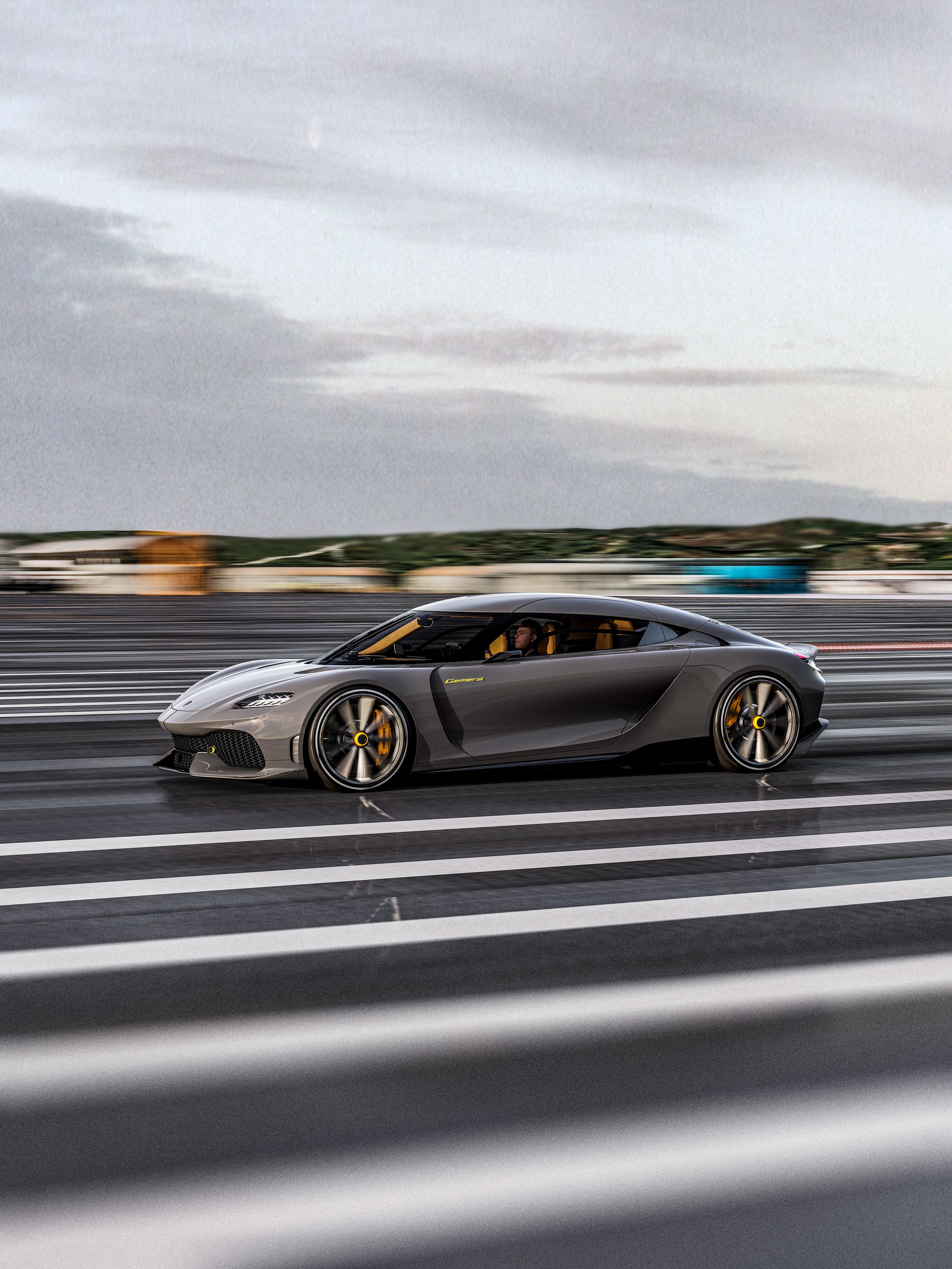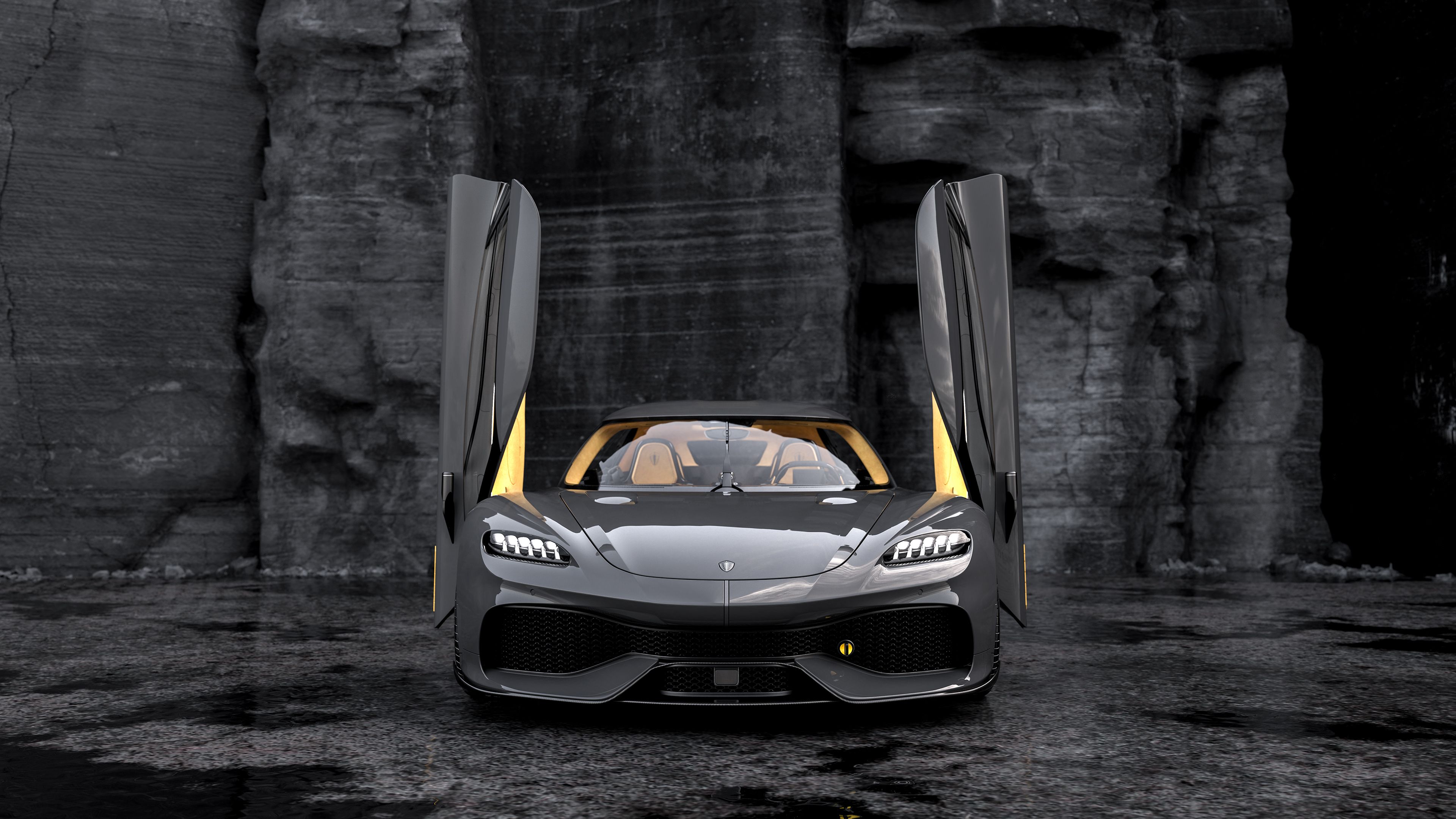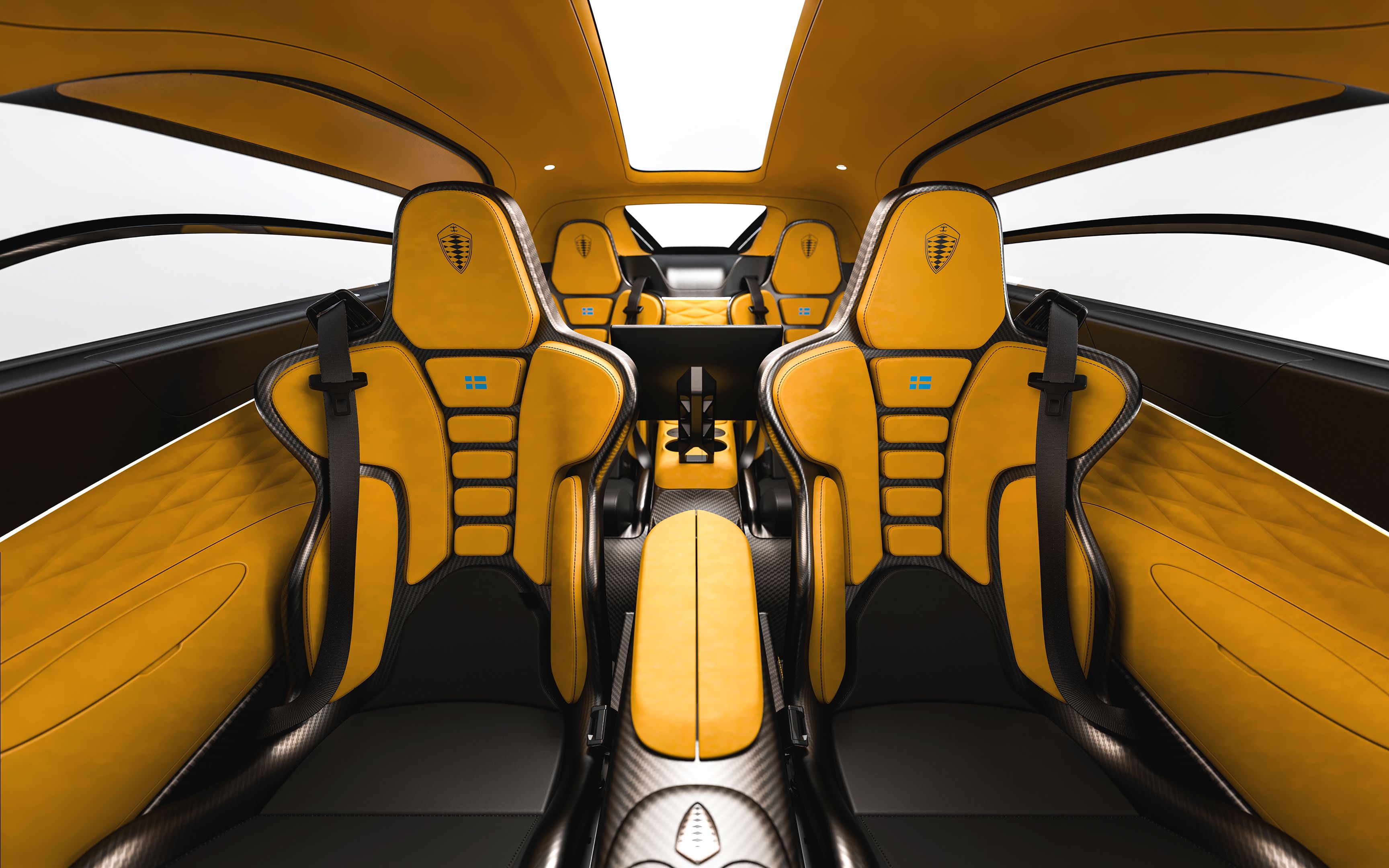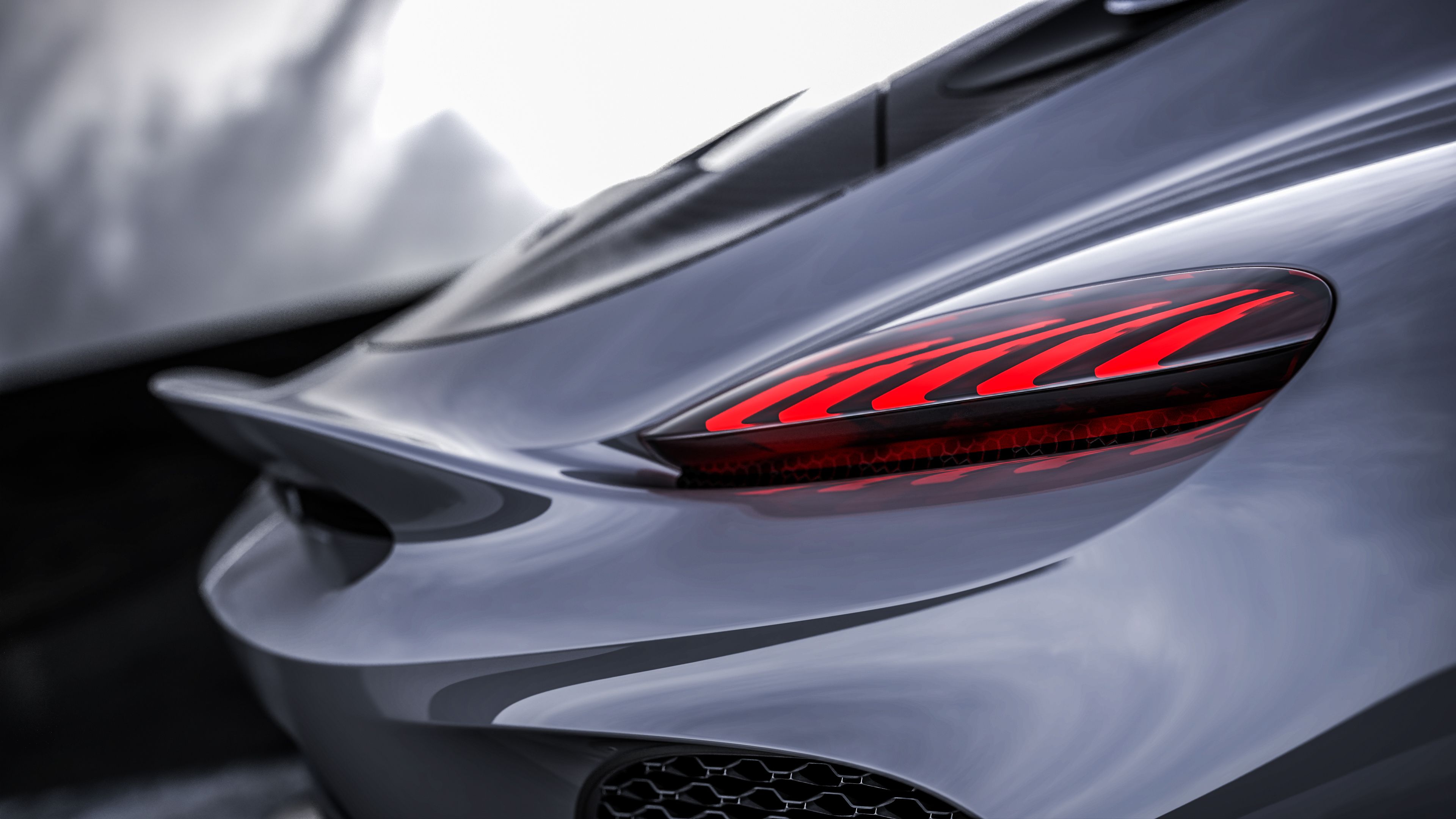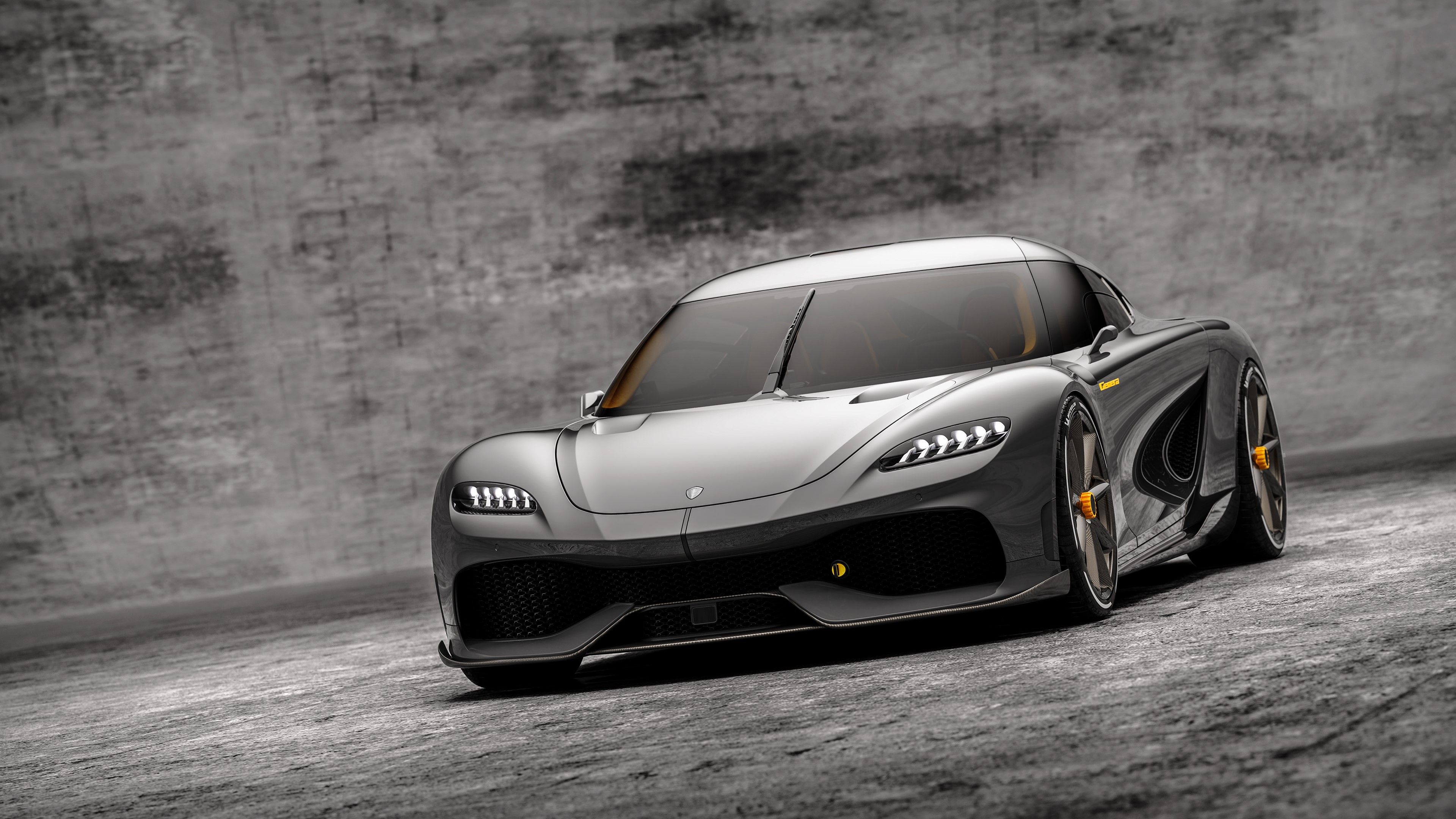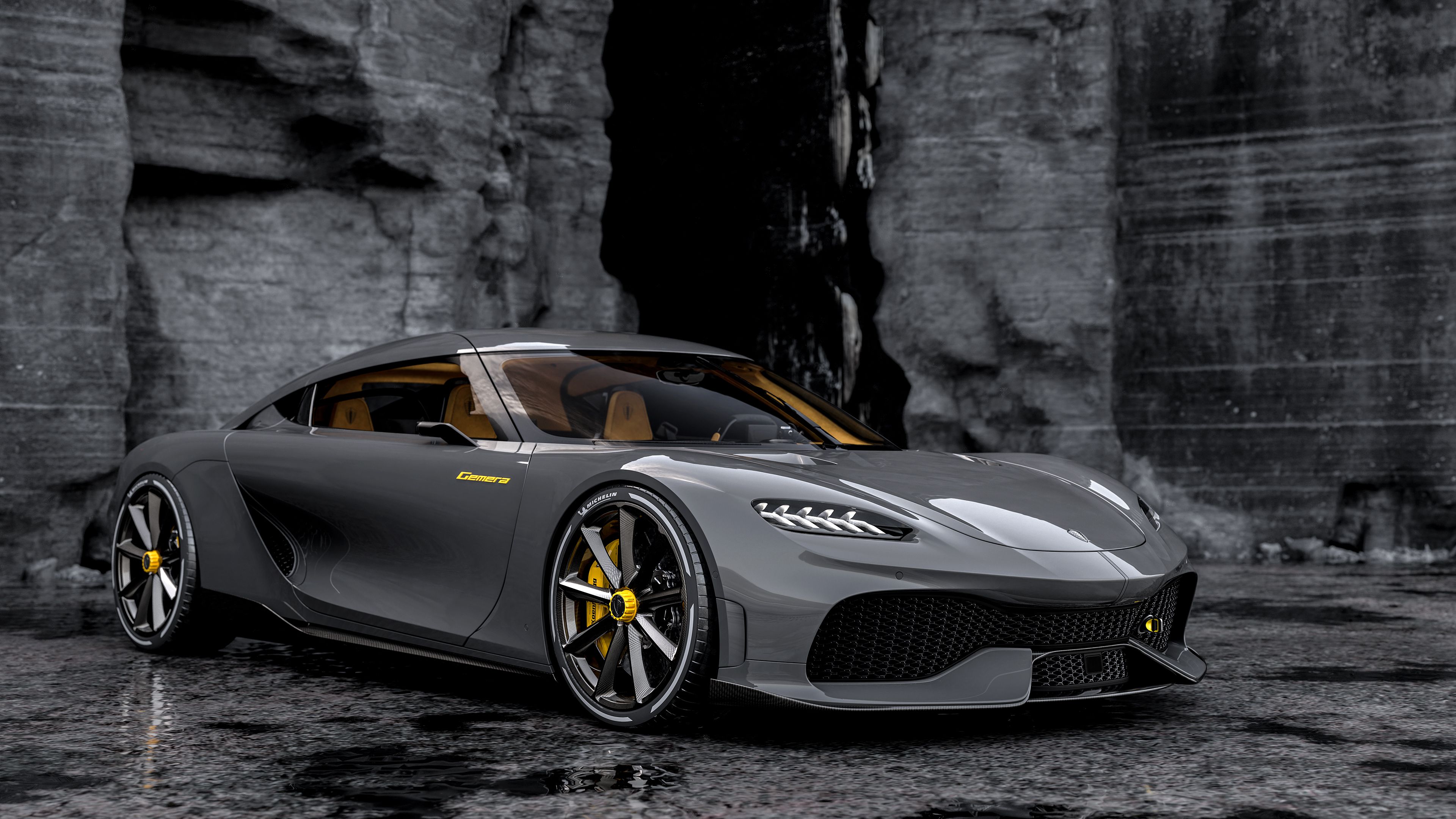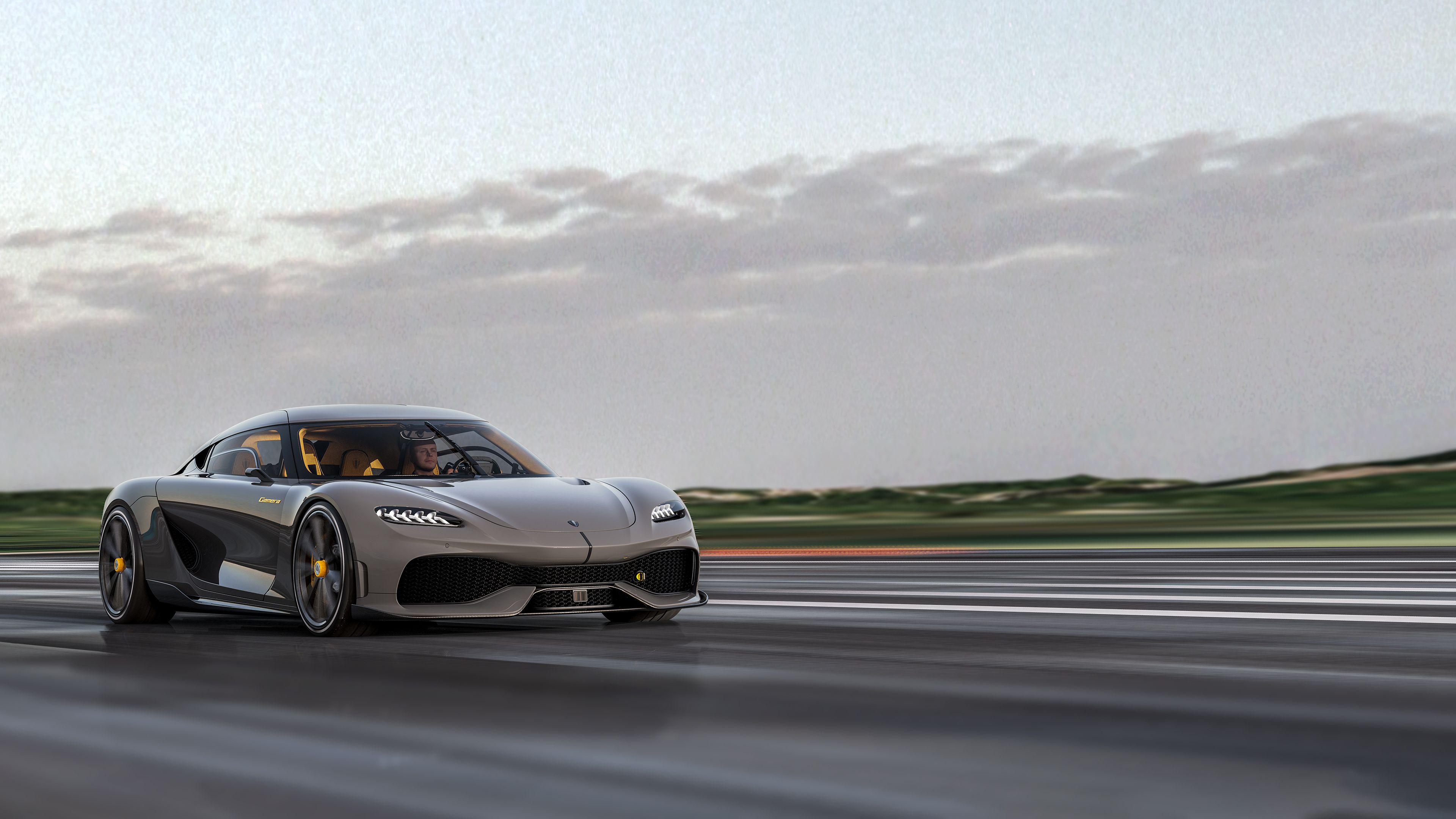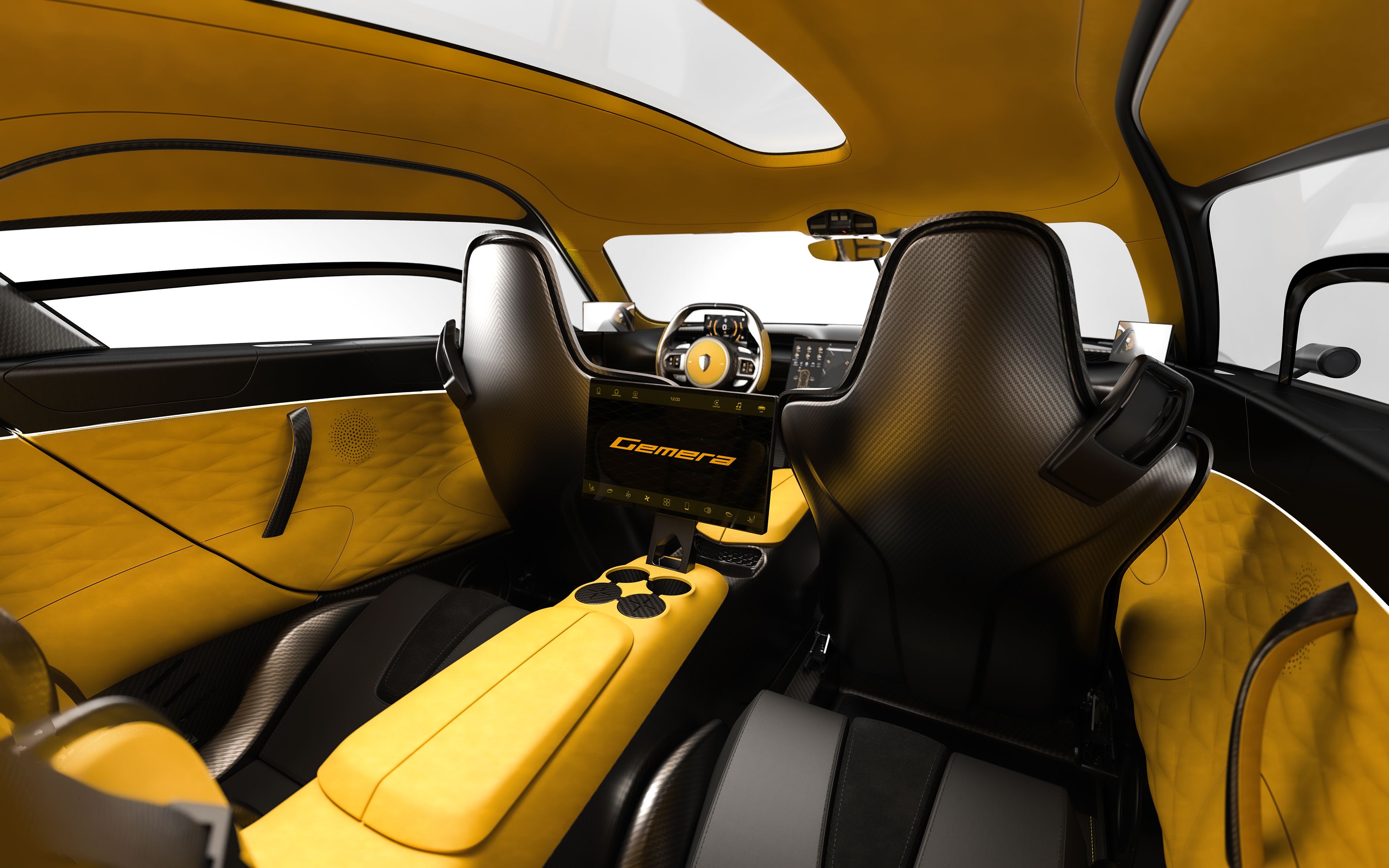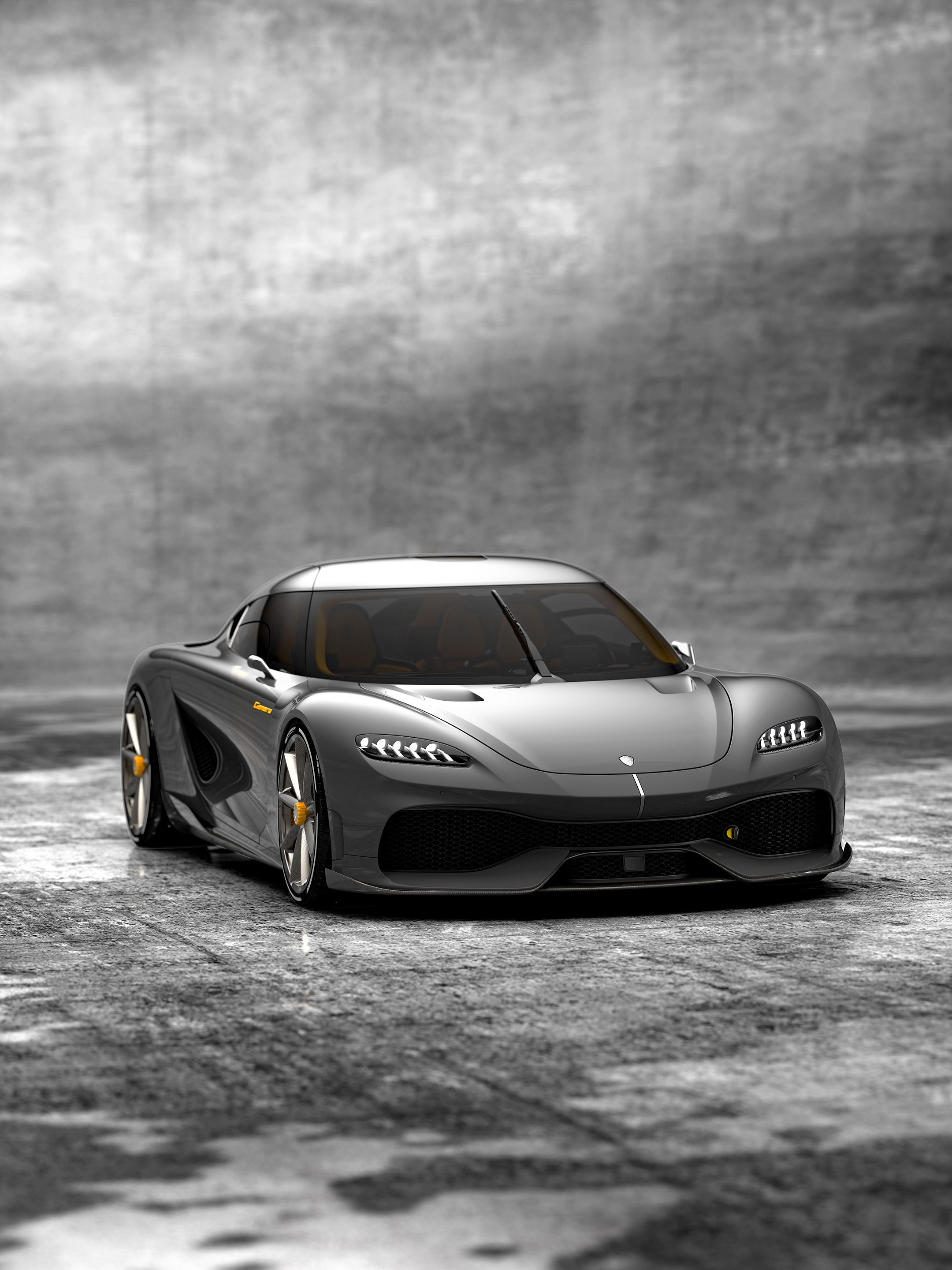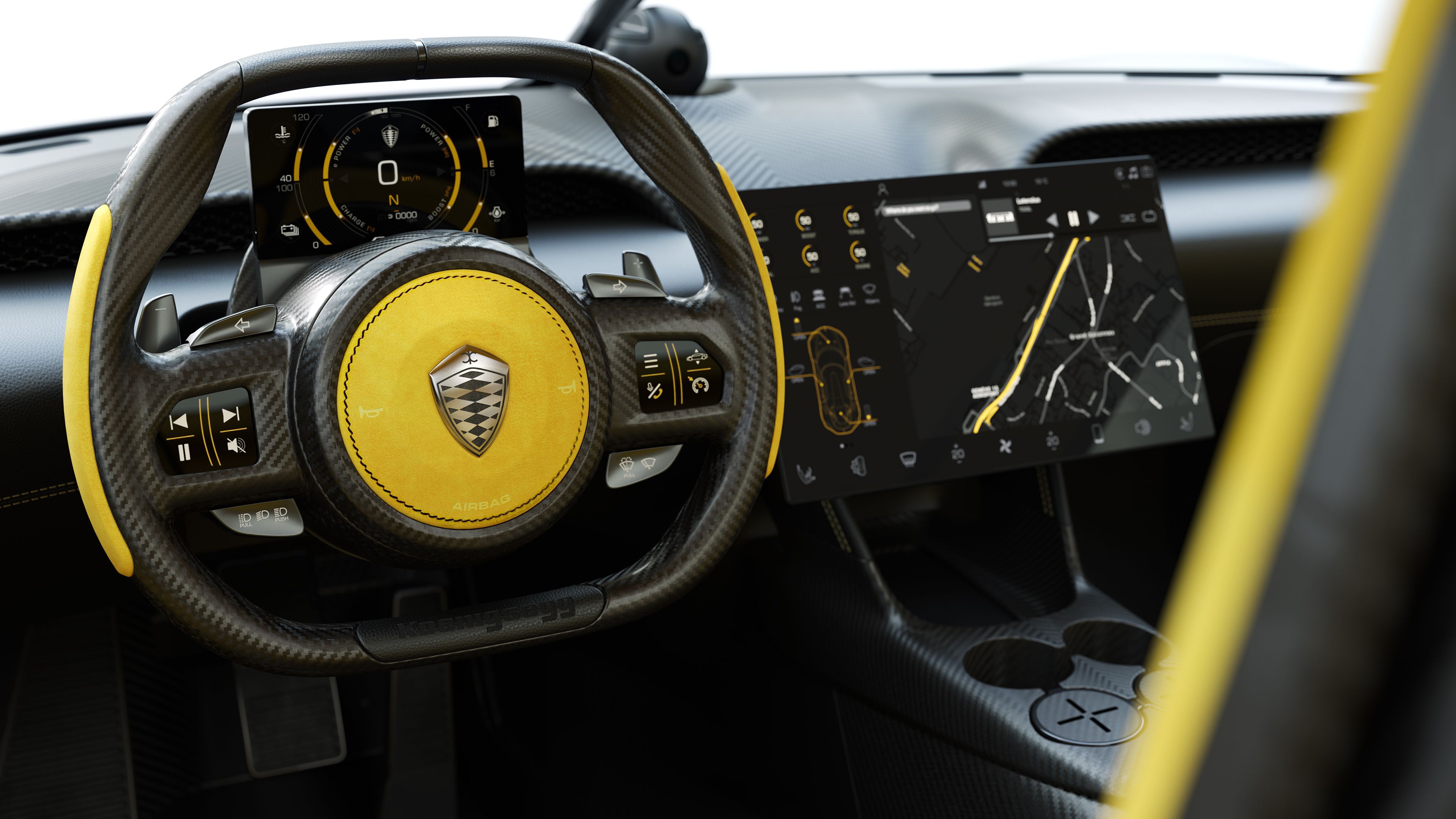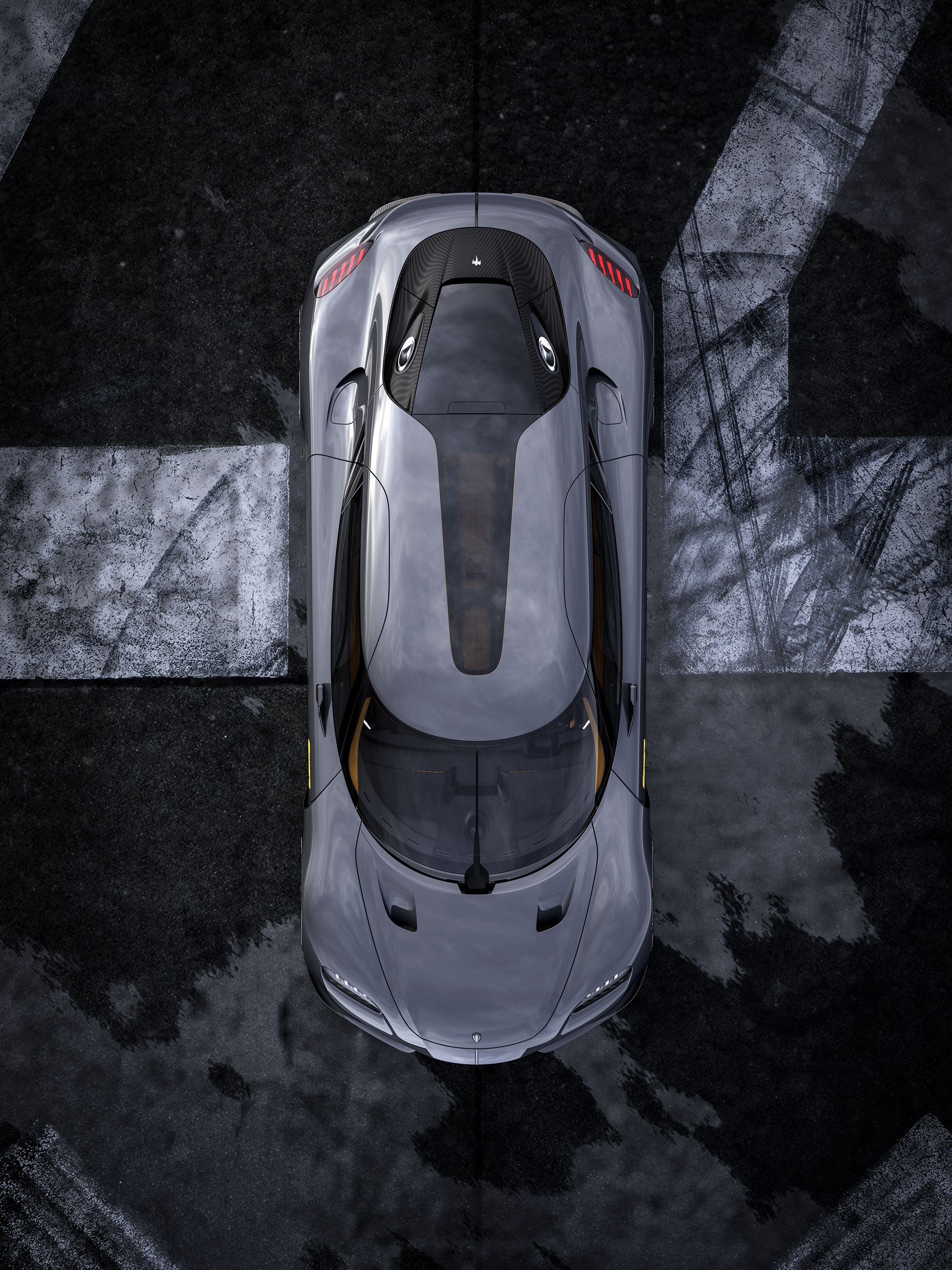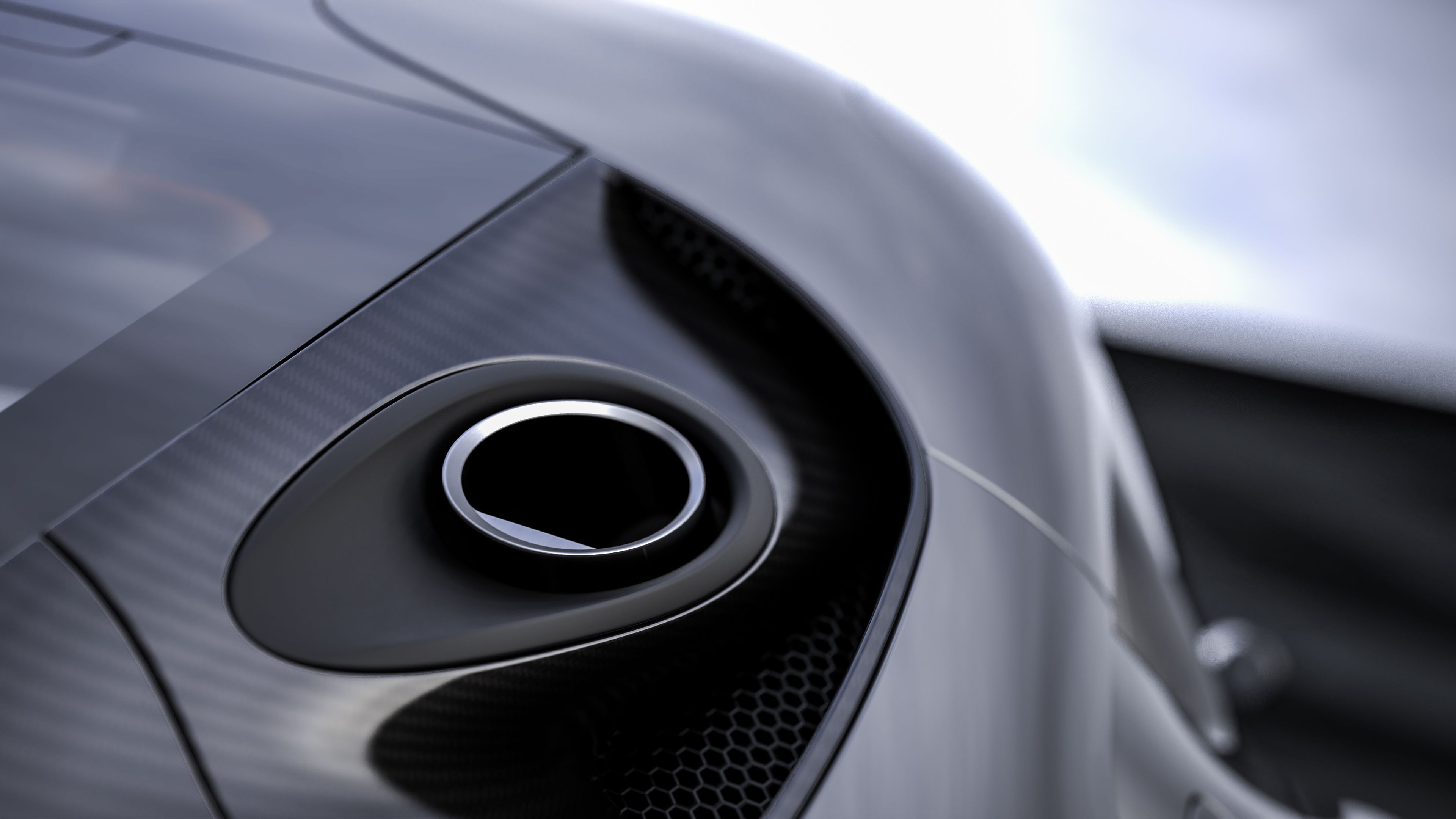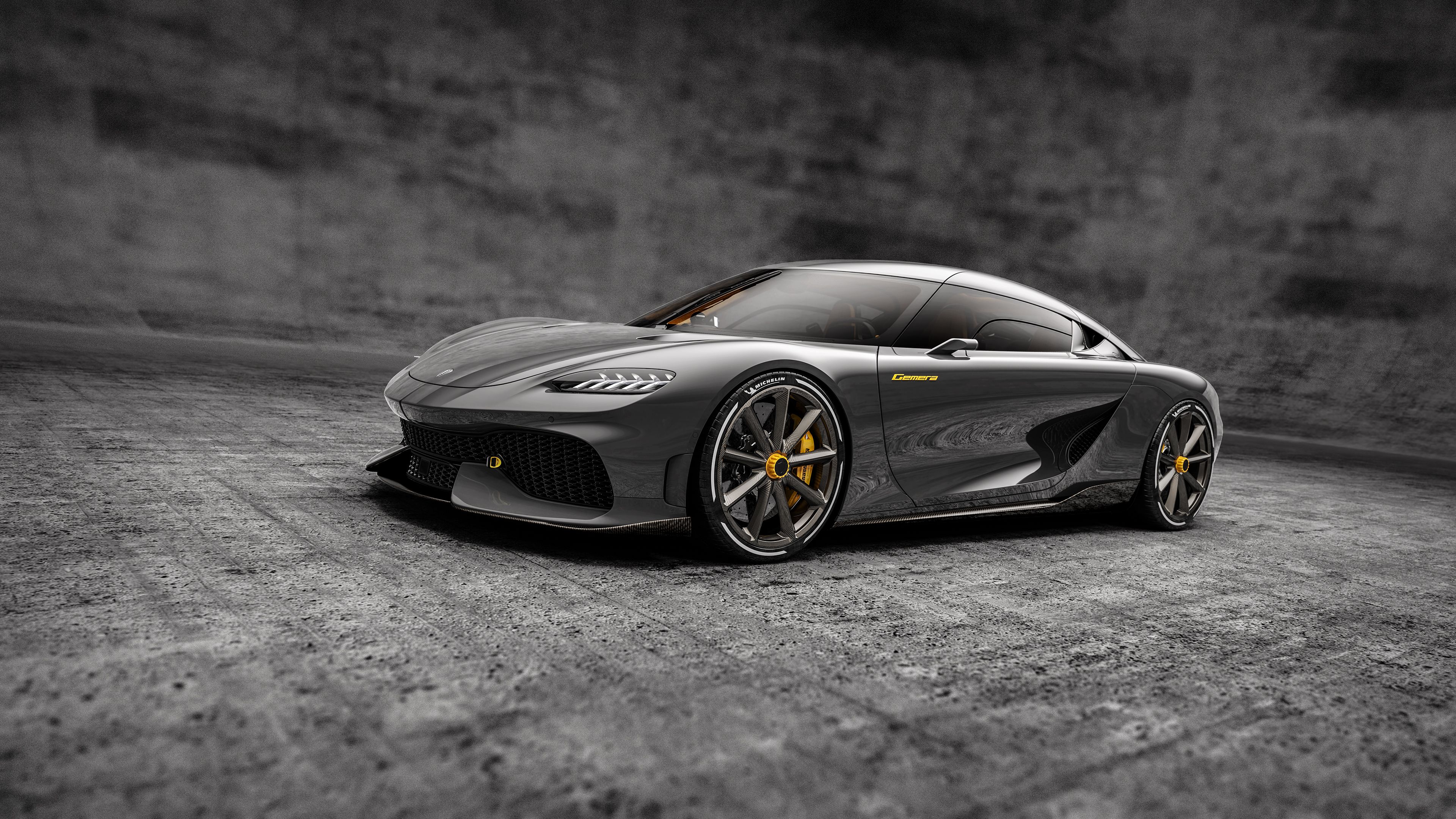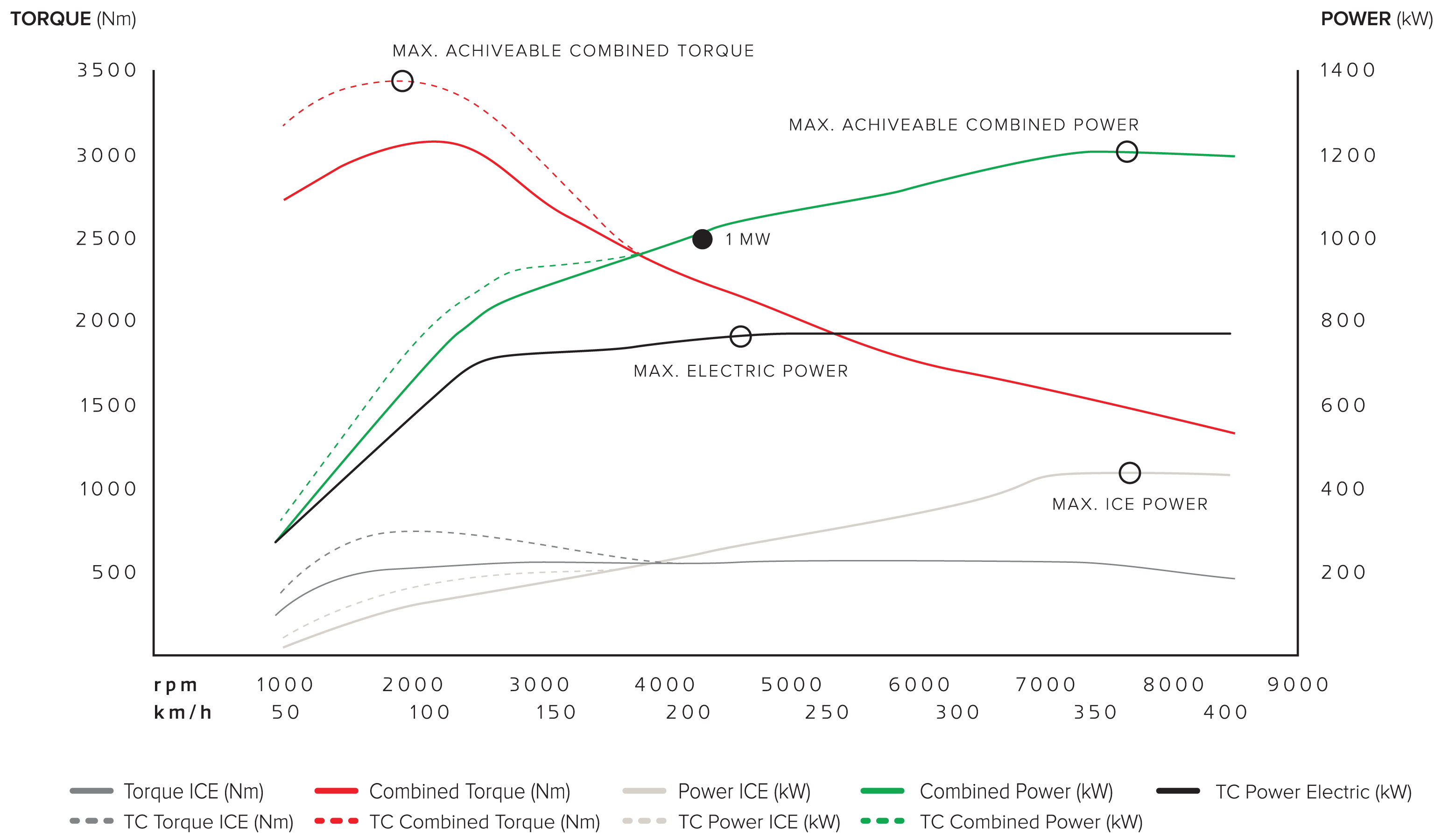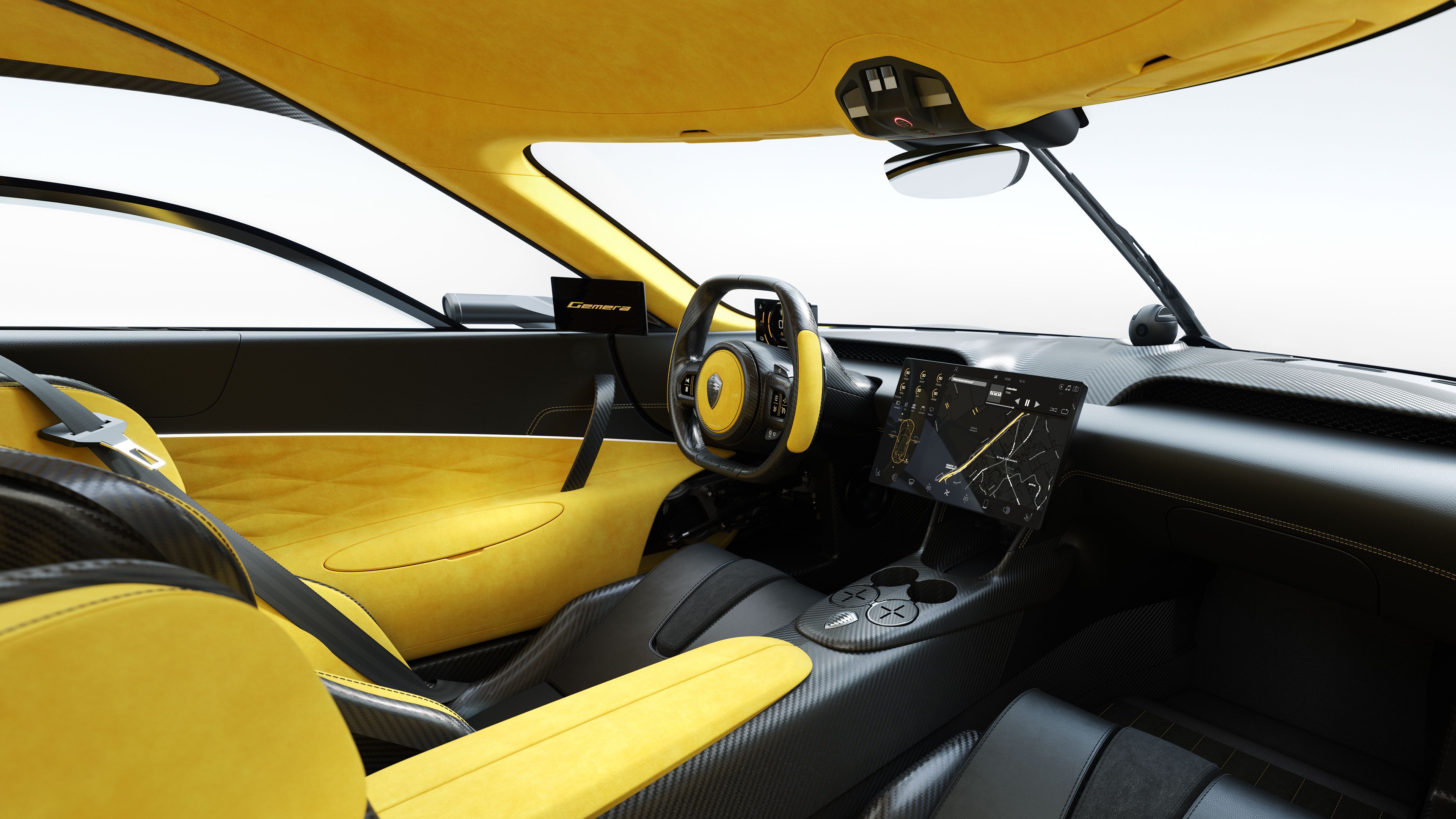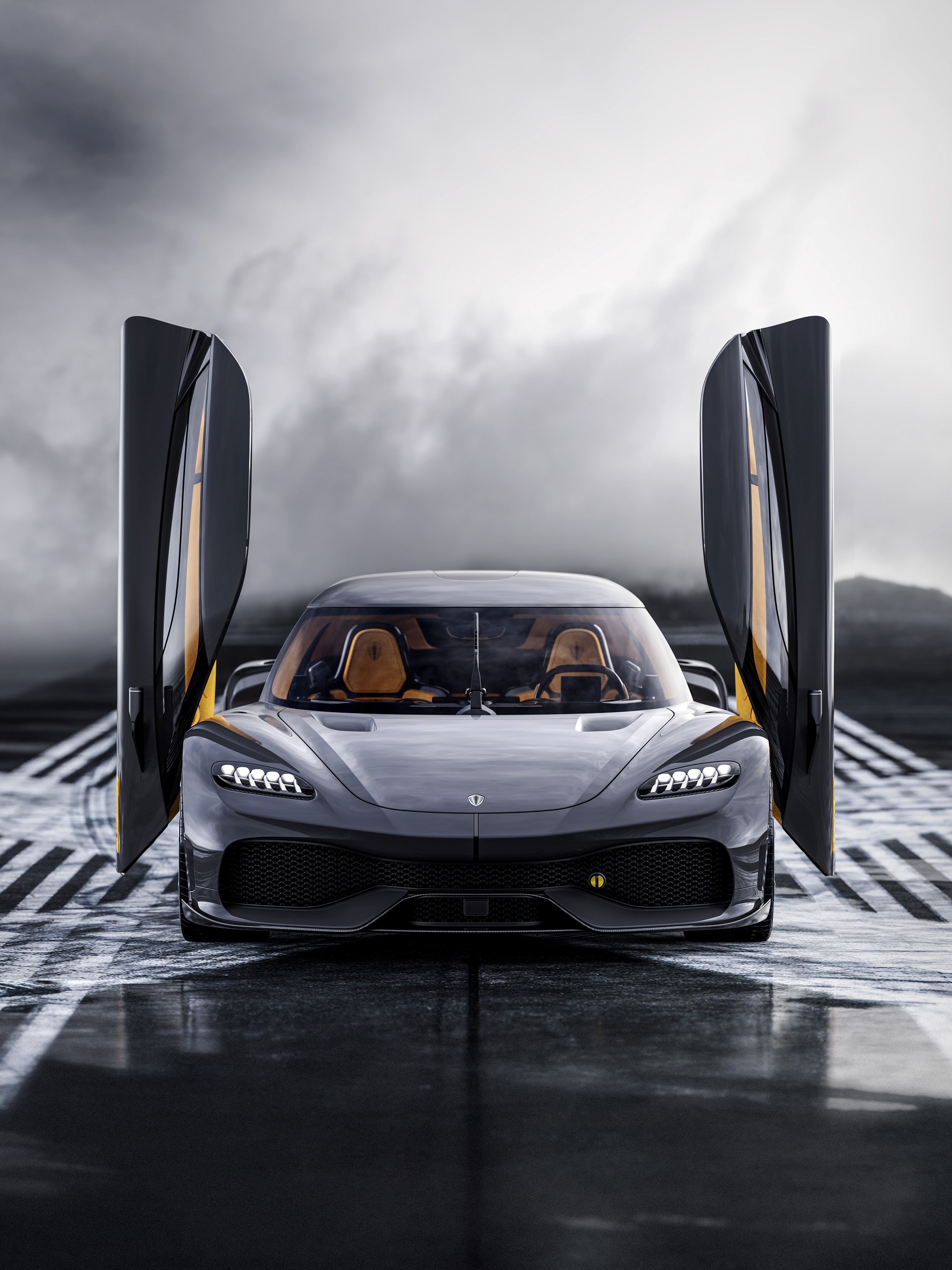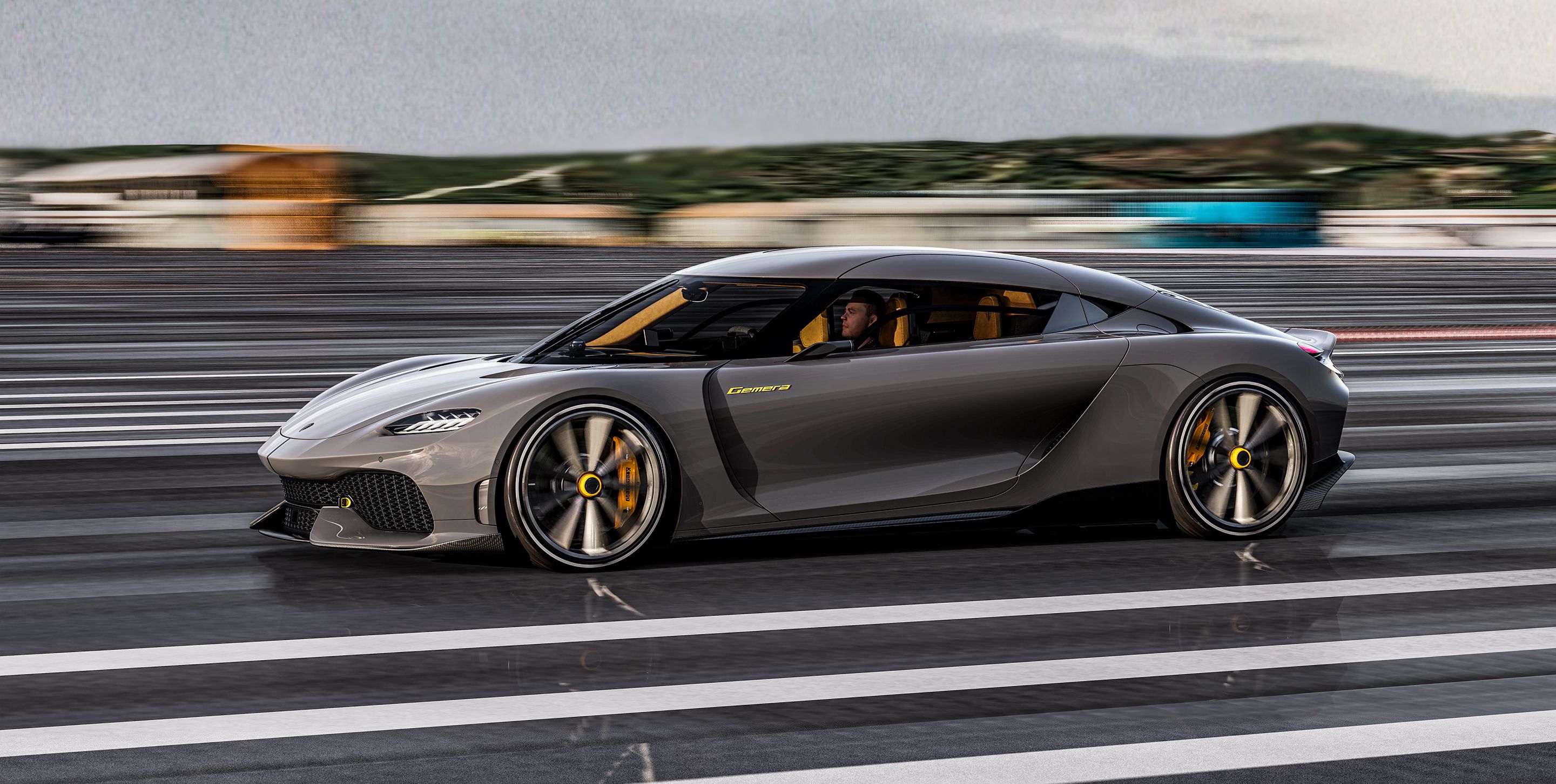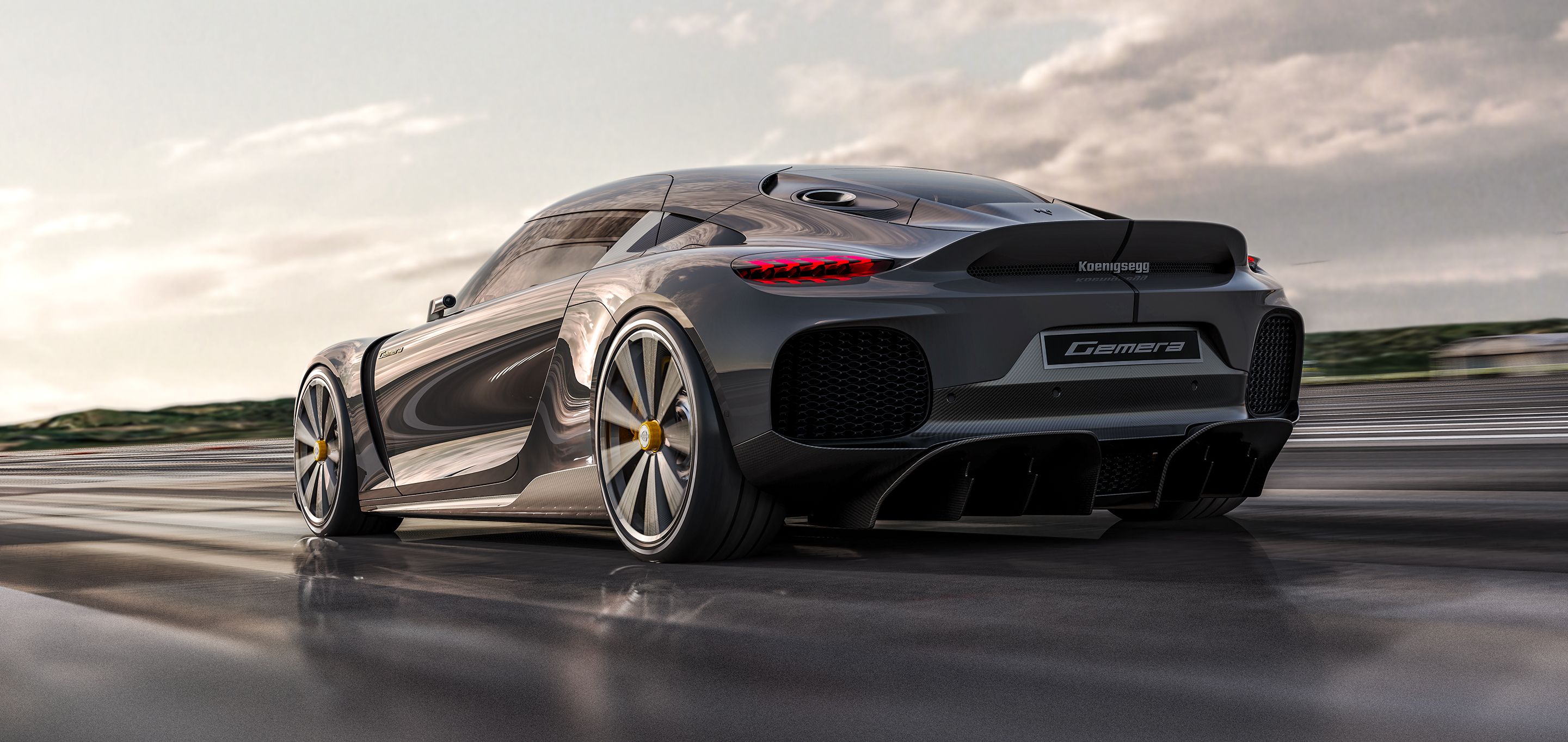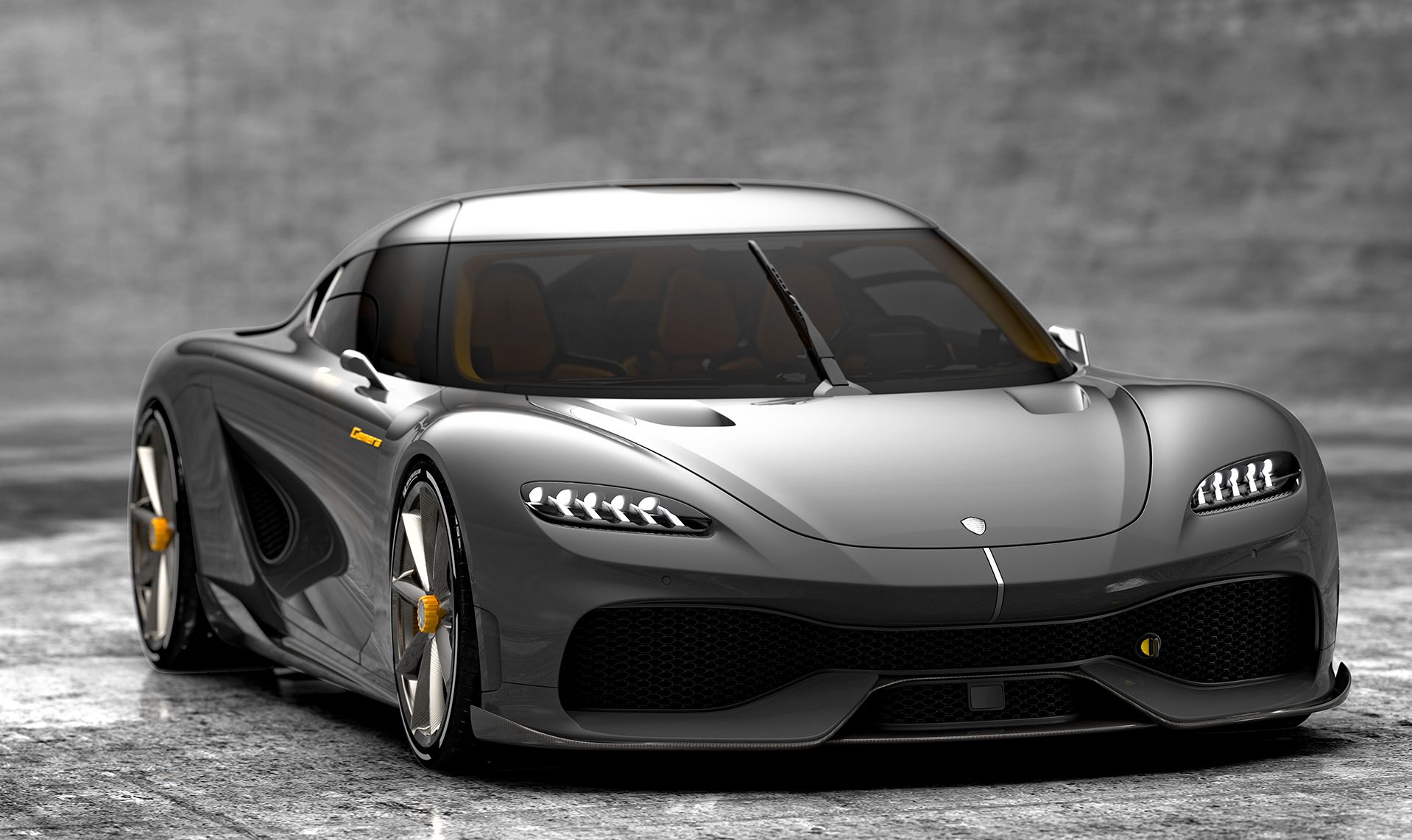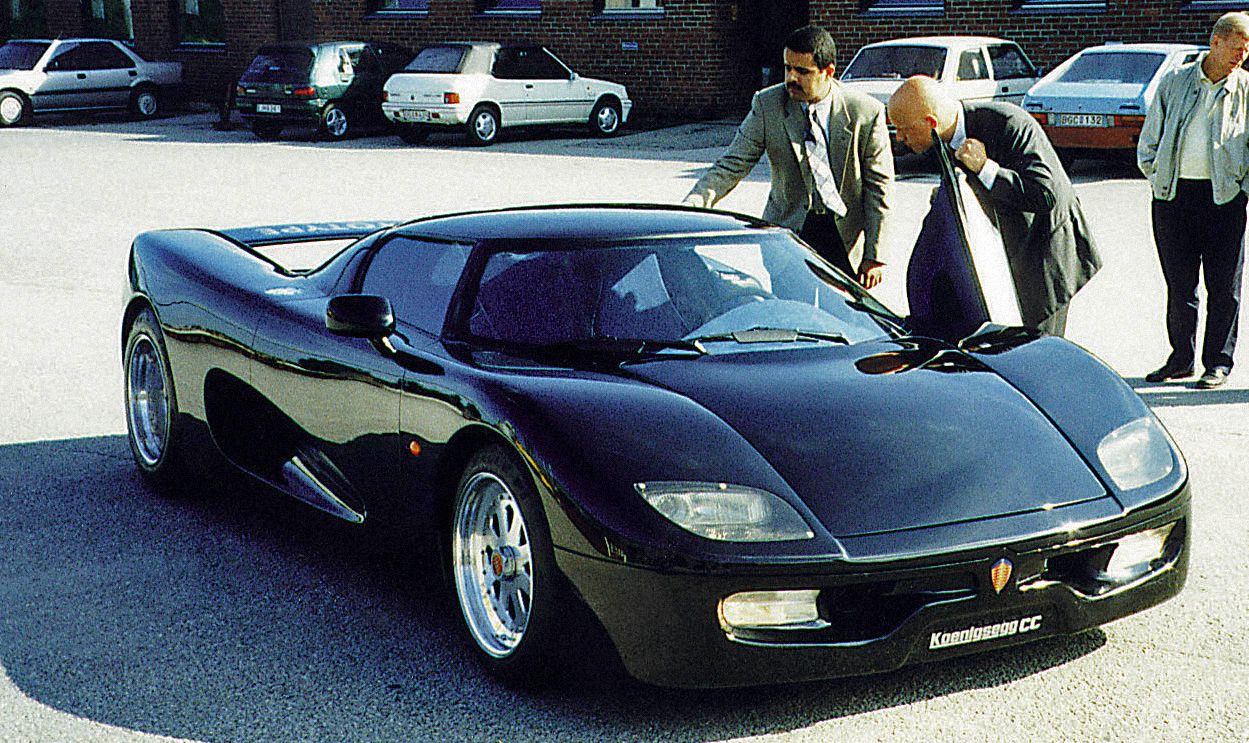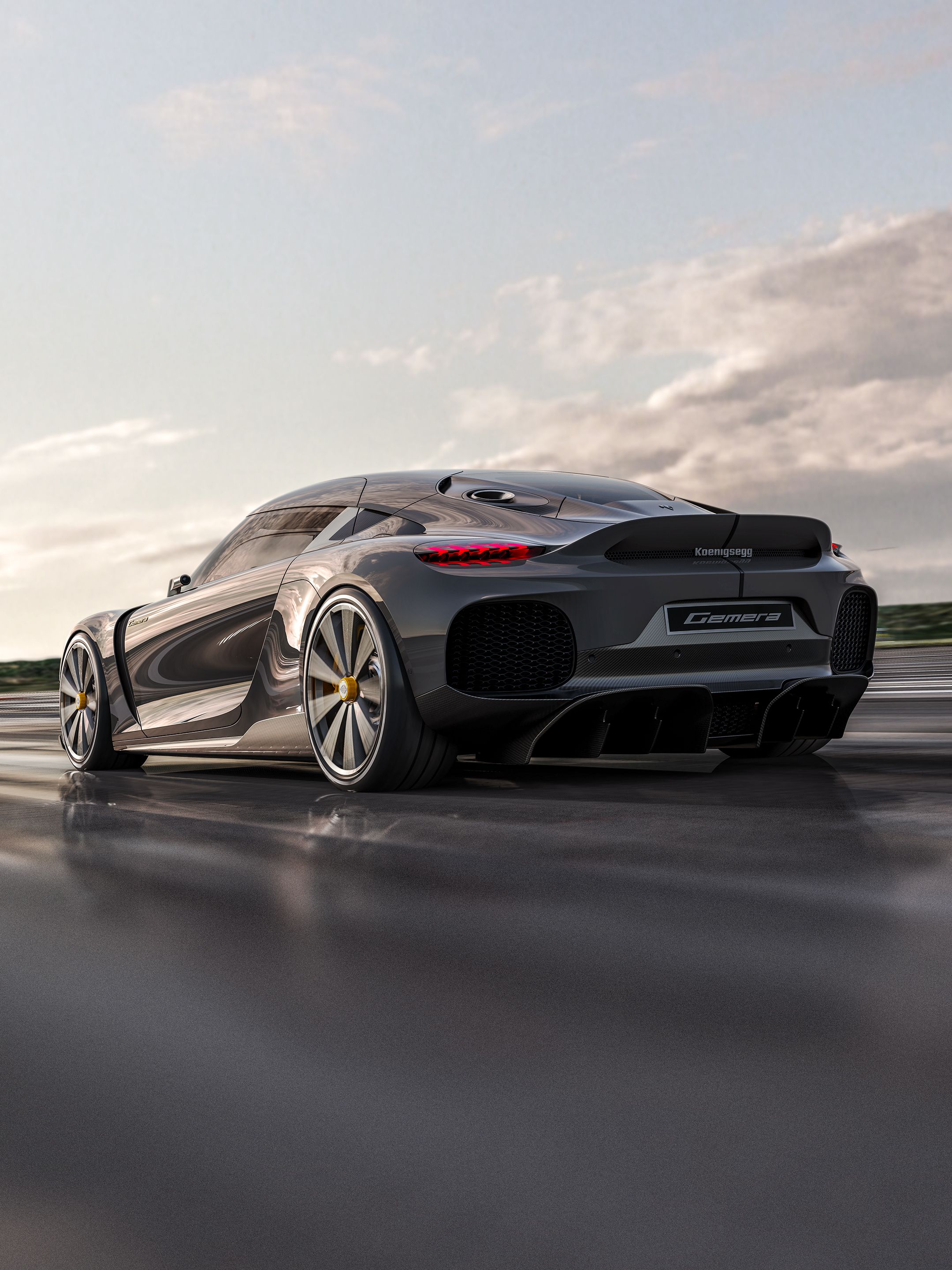The 2021 Koenigsegg Gemera is a two-door, four-seat hypercar developed by the Swedish company that gave us the Agera, Regera, and Jesko. But unlike its siblings, and despite having only two doors, the 2021 Gemera offers seating for four. And it does so via four equally comfortable seats, so it's not just a regular grand tourer. The 2021 Gemera boasts a hybrid drivetrain under the skin, comprising three electric motor and a three-cylinder engine. As shocking as it may sound, the three-cylinder generates 600 horsepower, making it the most powerful of its kind in production, and works on a variety of fuels, including CO2-neutral methanol. Overall, the hybrid drivetrain pumps out an amazing 1,700 horsepower and 2,581 pound-feet of torque. Let's find out more about the world's first practical megacar - aka Mega GT - in the review below.
2021 Koenigsegg Gemera
- Make: Array
- Model: 2021 Koenigsegg Gemera
- Engine/Motor: inline-3
- Horsepower: 1700
- Torque: 2581
- [do not use] Vehicle Model: Array
<
Exterior
Although it's a brand-new concept for the brand, the Gemera looks similar to other Koenigsegg supercars past and present. We can see features borrowed from the Jesko, the Regera, and even the discontinued Agera.
However, I don't see much resemblance here. The CC was heavily inspired by supercars from the early 1990s and featured a blunt nose with rather small openings. It also featured large, swept-back headlamps. The Gemera looks completely different and much more modern in the front. The bumper sports a more organic design with a wide grille that becomes larger at the corners, while the nose pops out in the front of the fascia. It also sports a split diffuser at the bottom, while the headlamps are thin and wide.
|
|
ids=890841,890842 |
no_overlay=false |
before_label=Koenigsegg Gemera |
after_label=Koenigsegg CC> |
But like any Koenigsegg built so far, the Gemera features a short front hood, a feature that comes with most mid-engined supercars. Similarities continue over the top with a wrap-around windshield inspired by jet fighters, hidden A-pillars, and a sloping rear section.
Moving onto the sides, the Gemera looks as aggressive as any other Koenigsegg built so far. It features short overhangs, muscular yet streamlined fenders, and a roof section drops dramatically toward the rear. But the profile also showcases two unique features. For starters, the roof extends all the way to the edge of the deck. That's because Koenigsegg needed extra room toward the rear for the engine, which has been pushed further back to may way for the rear seats.
The Gemera doesn't feature traditional mirrors, having been replaced with rear-facing cameras mounted on small posts at the bottom of the A-pillars. These cameras send images to displays mounted inside the cabin.
The rear end isn't as aggressive as its Koenigsegg siblings. Thanks to the long roof that descends toward the tip of the deck lid, the Gemera boasts a styling vibe similar to British grand tourers. The taillights sit higher in the fascia on this model, while the big, integrated spoiler forms a classy duck-tail design.
Interior
The interior of the Gemera is once again familiar if you've seen other Koenigsegg models. The dashboard is as simple as they get, with a lowered center section that provides support for the massive infotainment display on the center stack. While most cars feature large instrument clusters as well, Koenigsegg opted to keep things simple with a tiny screen placed on the column of the steering wheel. This display shows only vital performance information, just like in full-fledged race cars. Everything else, including map navigation and battery info, is shown on the central screen.
Just like the dashboard, the door panels are quite simple. In this car, they come in a two-tone finish. There are the upper and lower areas in black, matching the central seats and the dashboard, and a yellow center section similar to the headliner, the center console armrest, and the seat bolsters.
The structure and the seatback are made from carbon-fiber, as are the center console and sections of the dashboard. Of course, there's way more carbon-fiber inside the cabin, but most of it is hidden under the upholstery.
So far, the description is similar to other Koenigsegg interiors. But things become a lot more interesting behind the front seats. While all the other Koenigseggs built until now feature an engine behind the front seats, the Gemera comes with an additional pair of seats.
Furthermore, the rear seats are identical to those in the front. They're not smaller as it happens in other luxury grand tourers, so we're looking at a proper four-seater and not just a glorified sports car with children seats in the rear. Impressively enough, the Gemera also features eight cupholders. Not two, not four, but eight! That's two per passenger. What's more, four cupholders are cooled, while the other four are heated. So each passenger can enjoy both cold and hot beverages if he wants to.
Trunk space is obviously limited in the Gemera, but the Swedish four-seater offers more luggage room than most supercars and grand tourer. Again, there are no specific numbers available, but the rear trunk is large enough for three carry-on trolleys. A smaller storage space under the front hood houses a fourth trolley of similar size. This means that each passenger can bring carry-on luggage, so you can actually share this supercar car with family and friends.
Drivetrain
Like all other Koenigseggs developed in recent years, the Gemera is built on a carbon-fiber monocoque. This design is becoming common in modern supercars, with McLaren using it in all of its products. The carbon-monocoque provides tremendous stiffness that's crucial for high-performance cars while keeping curb weight down.
So what powers the Gemera?
Not only larger than the regular three-pot at 2.0 liters, but it also features a twin-turbo dry sumped design. More importantly, it features a Freevalve system that enables the engine to have independent control of the intake and the exhaust valves. The system can then "decide" on its own how to operate the valves depending on driving conditions, as well as which combination to use in order to maximize performance, minimize fuel consumption, and regulate emissions. It also allows for a greater degree of control over the engine, which in turn provides significant performance and environmental benefits.
Furthermore, it improves engine efficiency by eliminating throttle losses and deactivates cylinders through a feature called Frequency Modulated Torque. This means that at times it works with just two cylinders. In certain scenarios, Freevalves are also capable of running a Miller cycle, which runs a static compression of 9.5:1. This setup gives the engine high efficiency and high power at the same time. Speaking of efficiency, Koenigsegg says that the three-cylinder's consumption is 15 to 20 percent lower than a typical 2.0-liter, four-cylinder unit with direct injection and variable camshaft.
So how powerful is this engine?
It may seem hard to believe, but this tiny three-cylinder cranks out a whopping 600 horsepower and 443 pound-feet of torque. This insane output makes it the most powerful three-cylinder in production by far. To get an idea of how massive this thing is, the 1.6-liter three-cylinder in the Toyota GR Yaris generates 268 horsepower and 273 pound-feet. The 1.5-liter three-pot in the BMW i8 is rated at 228 horses and 236 pound-feet, while the 1.5-liter EcoBoost mill in the Ford Fiesta ST comes in at 197 horsepower and 214 pound-feet.
Heck, this three-banger generates more than notably bigger high-performance engines. For instance, it packs an extra 38 horses when compared to the 3.8-liter V-8 in the McLaren 570S and eight horsepower more than the 3.9-liter V-8 in the Ferrari Portofino. Not to mention that it puts almost all four-cylinder and V-6 performance engines on the market to shame.
We don't have fuel consumption figures to run about, but the power-to-consumption ratio of this unit must surpass everything developed so far.
But the innovation doesn't stop here.
Finally, Koenigsegg says that this three-cylinder boasts an "amazing" sound given the size and the layout. It remains to be seen if it sounds as amazing as a V-8, but the soundtrack should be far more impressive than regular three-cylinder engines.
And then comes the electric motors. Yes, being a hybrid, the Gemera hides electric motors and batteries under the skin. There are three electric motors, one for each rear wheel and one on the crankshaft, and they crank out a massive 1,100 horsepower. With both the three-cylinder engine and the electric motors at work, total output is rated at up to 1,700 horsepower. That's more oomph than most supercars you can buy right now.
It's more than Koenigsegg Regera, rated at 1,479 horsepower, and more than the Bugatti Chiron Super Sport 300+, rated 1,578 horsepower. The Gemera also climbs above the Jesko, which boasts 1,603 horses. The Gemera falls behind the SSC Tuatara (1,750 horsepower) and the Hennessey Venom F5 (1,817 horsepower), but these cars have yet to hit the road as of March 2020. On the other hand, Lotus is already producing the Evija, an electric supercar that's supposed to hit the road with a massive 2,000 horses.
But when it comes to torque, the Gemera destroys everything in its path thanks to a massive 2,581 pound-feet. Not even the Lotus Evija can hit that since it has notably less than 1,500 pound-feet at its disposal.
As you might have already guessed, the Gemera is one quick four-seater. The massively powerful engine and electric motors push the supercar from 0 to 60 mph in just 1.9 seconds. That's almost a half-second quicker than the range-topping Tesla Model S and three tenths quicker than the Dodge Challenger SRT Demon. That's also on par with the upcoming Tesla Roadster 2.0, which is supposed to have an incredible 7,400 pound-feet of torque.
If you like numbers, then you should also be impressed with the fact that the Gemera can hit 249 mph in just 20 seconds. Amazingly enough, it can accelerate to 211 mph on battery power alone. Koenigsegg hasn't released a top speed figure for this car, but I wouldn't be surprised if it will be capable of surpassing 300 mph.
The Gemera also has a usable electric range. The supercar can cover 31 miles on battery power only, which is notably more than hybrid supercars like the McLaren P1 and the Ferrari LaFerrari. It also surpasses the Regera, which comes with a 22-mile range. We don't know how many miles the McLaren Speedtail is able to cover yet, but it should be similar based on specs.
Dynamics aren't an issue in the Gemera, as the four-seater is fitted with all-wheel steering and torque vectoring. I'm pretty sure it will run impressive lap times on the Nurburgring if Koenigsegg decided to take it there.
Safety
The Gemera is supposed to be as same as a regular vehicle. It's fitted with six "smart" airbags and safety belt tensioners, but it also includes two fire extinguishers. It also comes with plenty of active safety features, like side and rear-view cameras, tire pressure monitoring, stability control, ABS, and automatic emergency braking. The carbon-fiber safety cell was also designed to include crumple zones for enhanced passenger safety in the event of a crash.
Prices
Like most supercars packed with nice features and an insanely powerful drivetrain, the Gemera doesn't come cheap. Koenigsegg wants $1.7 million for one, and it seems that it will build only 300 of them. But this sticker probably won't stop the Swedish firm from selling all 300 in a matter of weeks, like it usually happens with similar vehicles. Although it's far from cheap, the Gemera isn't the most expensive Koenigsegg out there. It costs less than the Regera and the Jesko, priced from $2 million and $3 million, respectively.
Competitors
Koenigsegg basically invented a new segment with the Gemera. One for vehicles that boast hybrid hypercar power and offer a full-fledged four-seat interior with premium features. There are no similar cars to compare it to, so we're going to pit it against one that comes close and one that might become a reality in the future.
McLaren Speedtail
A spiritual successor to the iconic F1 as far as cabin layout goes, the Speedtail is a three-seater. It might not have four seats like the Gemera, but it's a step up from the regular two-door hypercar. The layout is identical to the McLaren F1, with the driver's seat in the center and one passenger seat on each side, mounted a bit farther back. Just like the Gemera, the Speedtail is packed with state-of-the-art tech, and McLaren even offers a few luxury features, at least as far as materials go. Design-wise, it's even sleeker than the Gemera, but it boasts better aerodynamics thanks to a longer rear end and aero-optimized wheel covers. The Speedtail is also a hybrid, but it packs different components. The combustion engine is a 4.0-liter V-8, while electric power comes from just one motor. The V-8 cranks out 746 horsepower and 590 pound-feet, while the electric motor generates 308 horses and 256 pound-feet. Combined system output is rated at 1,035 horsepower and 848 pound-feet, which is notably less than the Gemera's. However, the Speedtail is pretty impressive when it comes to performance specs. It hits a top speed of 250 mph and charges from 0 to 186 mph in 12.8 seconds. Despite being less powerful. the Speedtail is more expensive, coming in at more than $2 million. McLaren will build only 106 unis, and all are sold out.
Read our full story on the 2020 McLaren Speedtail
Bugatti Galibier
The Galibier is a concept sedan that Bugatti unveiled back in 2009. Word quickly spread that the French firm is planning a production model under the Royale name, but it has yet to happen until 2020. However, Bugatti might follow up on the project now that it has access to high-performance hybrid drivetrains from the Volkswagen group. And although the concept and our rendering have four doors, Bugatti might take the Koenigsegg route and build a two-door four-seater. Like a slightly longer four-seat version of the Chiron. If this happens, it could be the first real competitor for the Gemera because Bugatti has the means to produce an extremely powerful, luxurious, and customizable vehicle. Expect the Galibier to fetch well in excess of $2 million before options.
Read our speculative review of the 2020 Bugatti Galibier
Conclusion
It is not often one can say a new category of car has been created, but Koenigsegg did just that with the Gemera. As sleek as a supercar, incredibly powerful, and (almost) as practical as a midsize sedan, the Gemera proves that hypercars can be practical and comfortable for long trips. And that they can transport more than two people in relative comfort. What's more, it developed in an incredible three-cylinder unit that could change the fate of the internal combustion engine and unleashed performance that only a handful of carmakers will be able to match in the future. Sure, it's expensive, and 99.9% of us can't afford it. Not to mention that most of us won't see one in the metal. But it's an innovative concept in so many departments. To me, the Koenigsegg Gemera is definitely the car of the year only three months into 2020.

